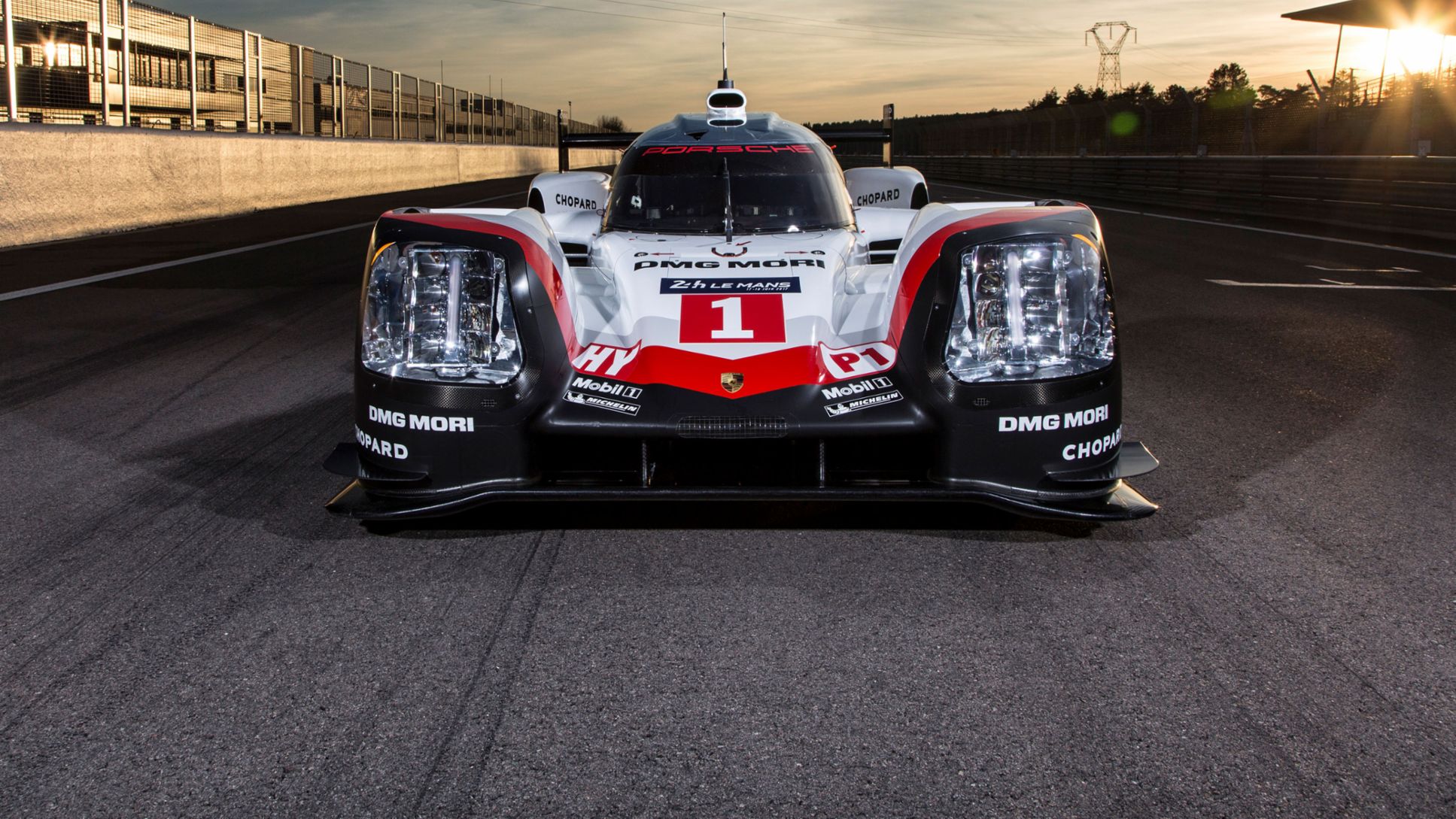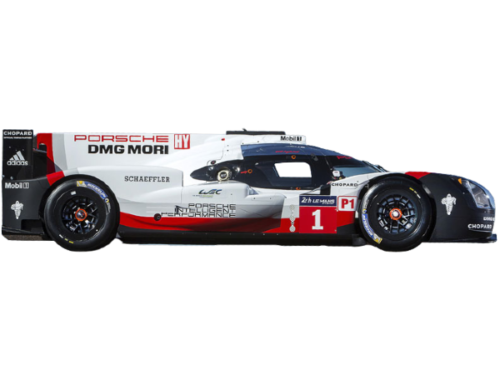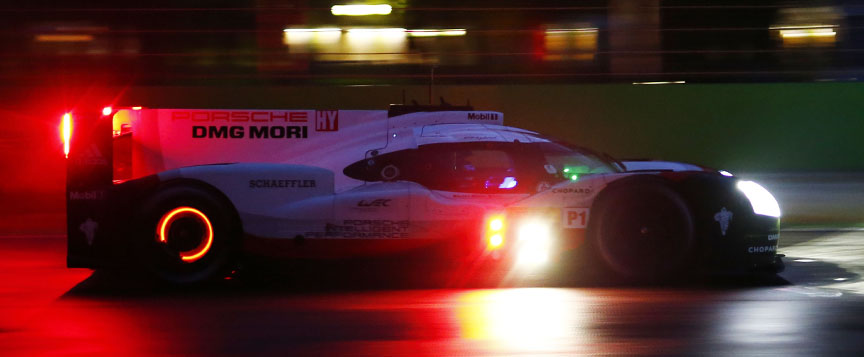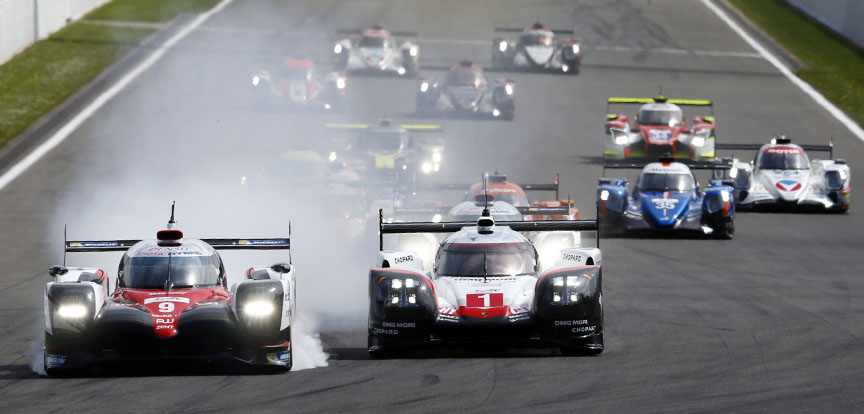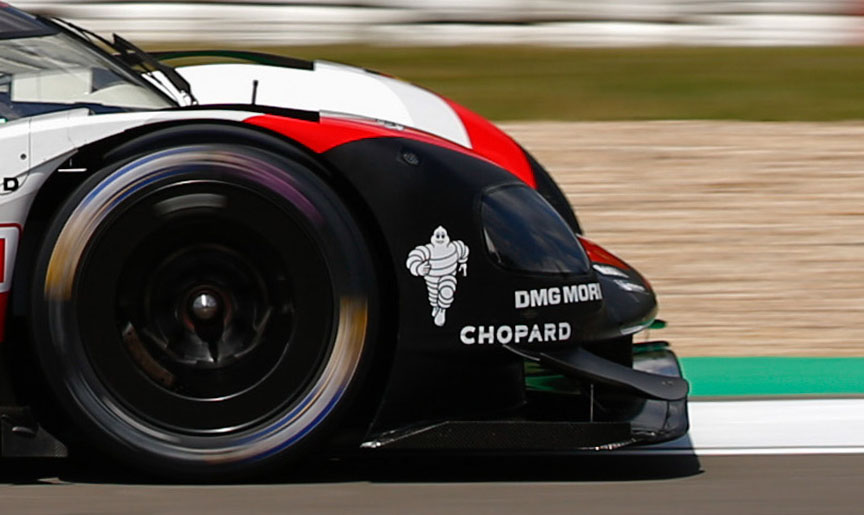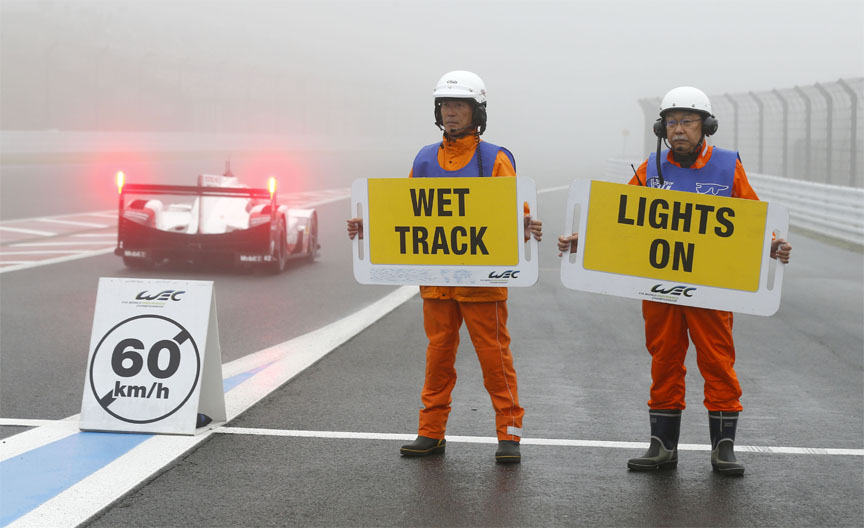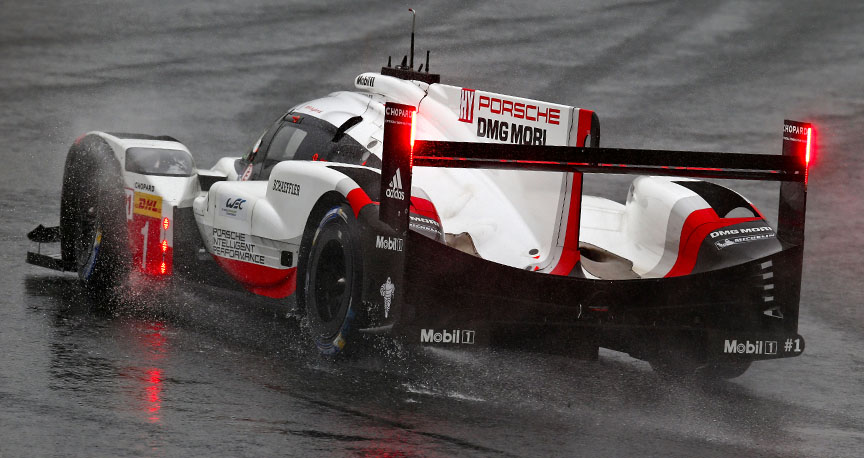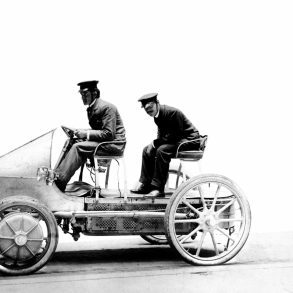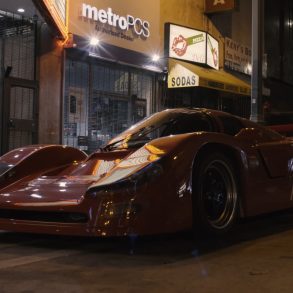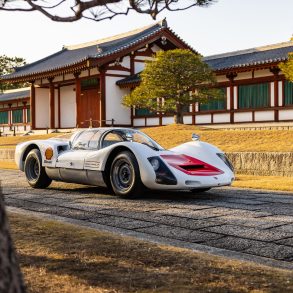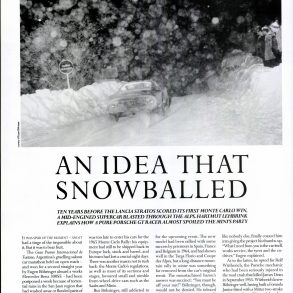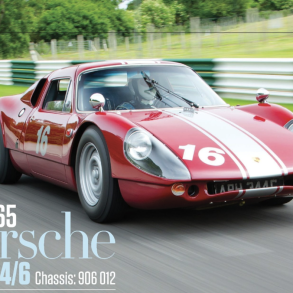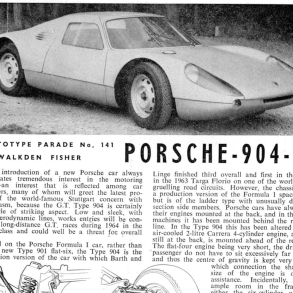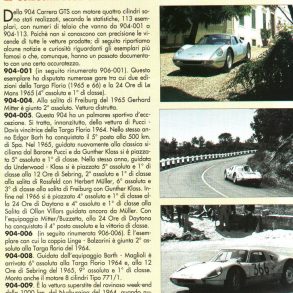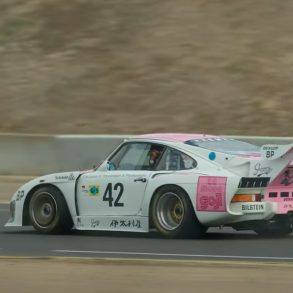2017 Porsche 919 Hybrid (9R9-2017)
Premiere: March 31, 2017 Autodromo Monza, Italy / Achievements: 2017 Le Mans 24h winner, 2017 FIA World Endurance Manufacturers’ Championship winner, 2017 FIA World Endurance Drivers’ Championship winner
The 2017 919 Hybrid Basics
- Internal combustion engine: 2.0V4 turbo, *360 kW/490 PS (officially “just under 500 hp”)
- Electric motor: *309 kW/420 PS (officially “over 400 hp”)
- Peak system power: *669 kW/910 PS (officially “around 900 PS/662 kW”)
- Fuel tank: 62.3 L
- Dimensions: 4650x1900x1050 mm
- Weight without fuel: 875 kg/1929 lb, 888 kg/1958 lb incl. driver ballast
* estimation by Stuttcars.com, no official data availableThe 2016 FIA regulations reduced the fuel flow for all the prototypes and for Porsche this resulted in a loss of 8% of fuel which meant the output of the internal combustion engine dropped below 500 hp.
Although the monocoque remained unchanged, 60-70% of the parts were different compared to the 919-16. Modified were the aerodynamics, the chassis and the combustion engine. When comparing the front view of the 919-17 to the 919-16, the higher, wider and longer wheel arches immediately catch the eye. There are no mirrors and there is a new channel between the wheel arch and the monocoque. The radiator air intakes have been redesigned.
In an effort to increase safety, the new regulations reduced the downforce of the LMP1 prototypes, which decreased the cornering speeds. It was suspected the 2017 cars will be 3-4 seconds slower on the Le Mans track. To reduce LMP1 team costs, from 2017, the teams had 3 sets of tires fewer available for each race weekend per car. While 3 aerodynamics packages were allowed for the 2016 season, from 2017 two were allowed. A low-drag aerodynamics package was always designed for the very fast Le Mans track. The other aero pack for tracks with twists and turns supplied more downforce, but had a higher level of drag. A key focus for the engineers was to design the front end of the vehicle to be less aerodynamically sensitive. Andreas Seidl (Team Principal): “In 2016, the front end of the vehicle was accumulating small amounts of abraded rubber from the track surface. This rubber built up and upset the balance of the vehicle. We analyzed this phenomenon and optimized the relevant bodywork components.”
Approximately 60% of the recovered energy came from the KERS (Kinetic Energy Recovery System) on the front-axle brakes and 40% from the exhaust energy recovery system AER (AbgasEnergieRückgewinnung). That made the 919 the only Le Mans Prototype that recovered energy both during braking and acceleration. The turbine-generator in the exhaust system could run at a speed of more than 120,000 rpm (more than 2000 revolutions in a second). To ensure that the turbine functioned just as efficiently at lower speeds, when exhaust pressure was low, the turbine featured variable turbine geometry. Just like the energy recovered from the KERS at front, the energy from AER was stored in the lithium-ion battery until it was needed. The driver could access this stored energy on demand at the push of a button – and used it to boost the car as it accelerated out of a corner while simultaneously replenishing the energy from the exhaust gas generated during acceleration. A further advantage of the KERS was that it enabled to have smaller and lighter brakes. This also reduced air resistance, as smaller brakes required less cooling.
It was decided that the 919-17 #1 would be driven by André Lotterer (Le Mans winner 2011, 2012, 2014, world champion 2012), Nick Tandy (LM winner 2015) and Neel Jani (LM winner 2016, world champion 2016) and the #2 by Timo Bernhard (world champion 2015), Earl Bamber (LM winner 2015) and Brendon Hartley (world champion 2015).
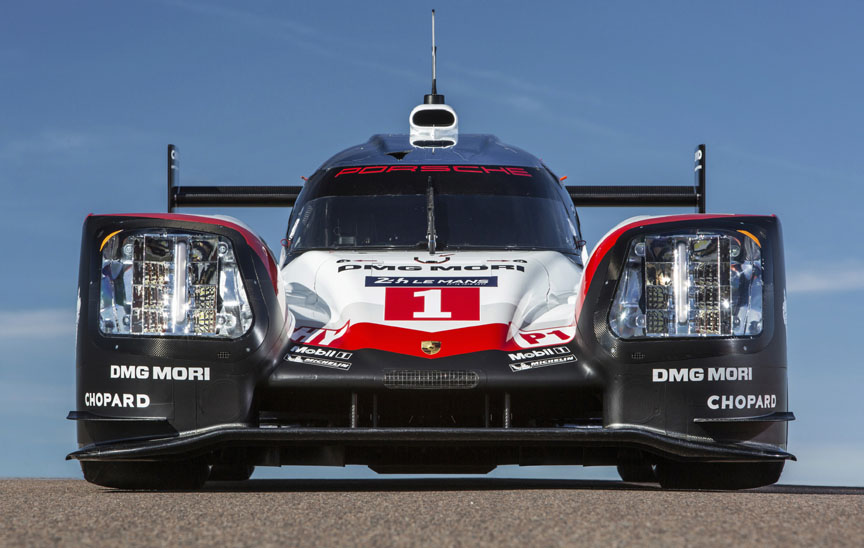
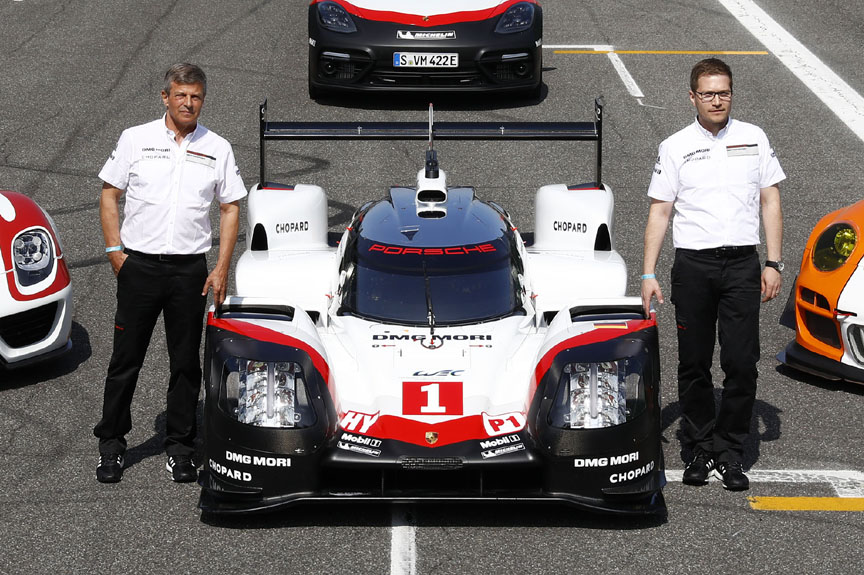
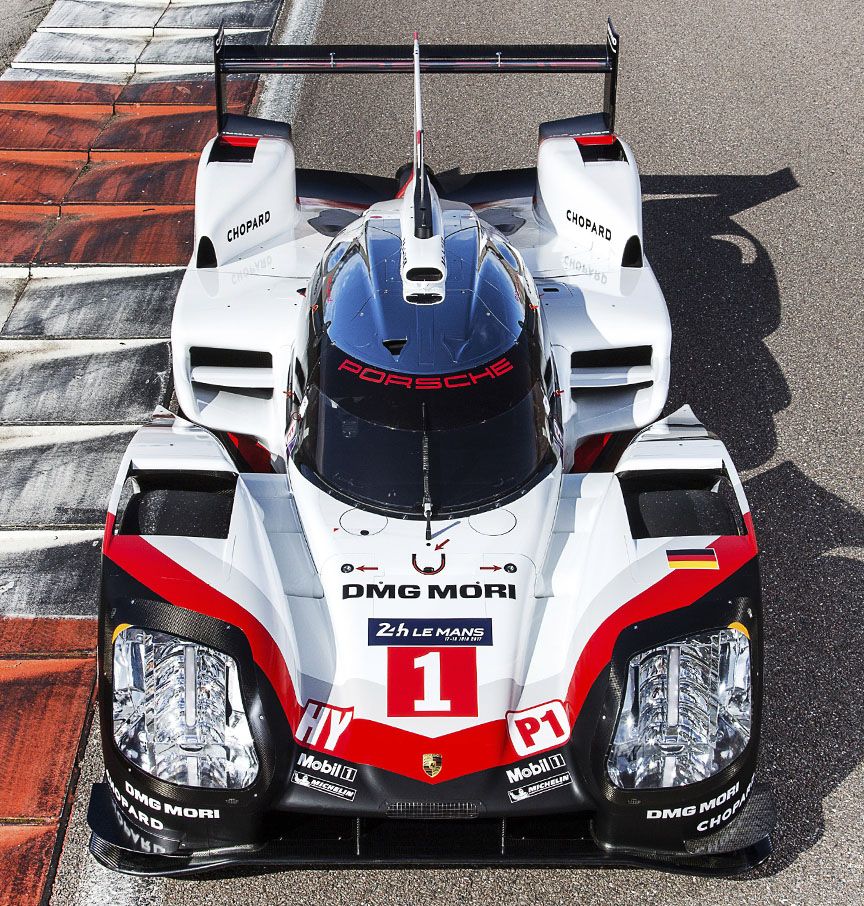
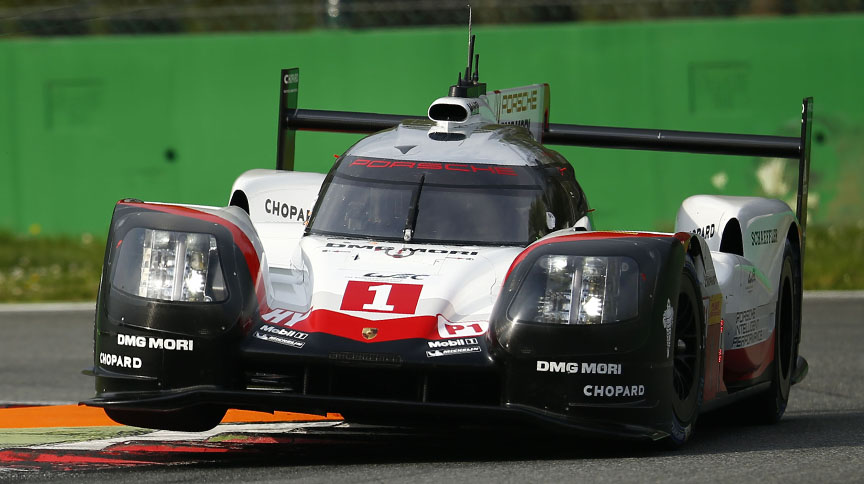
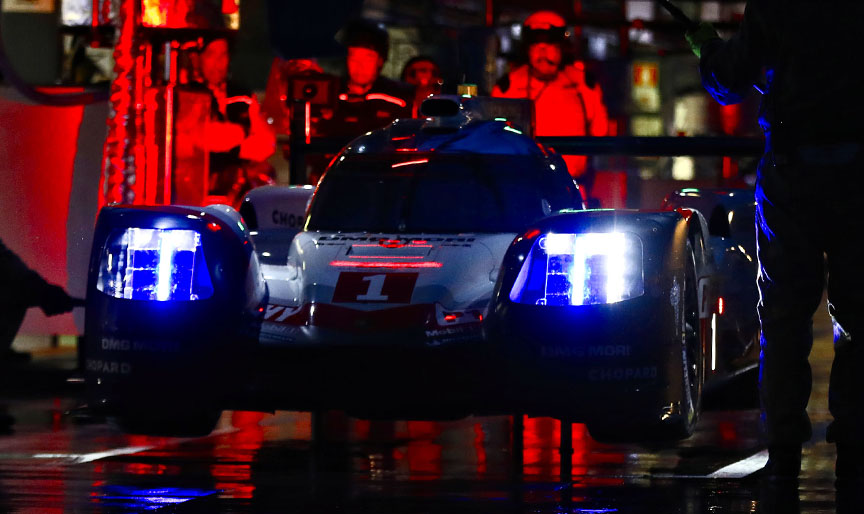
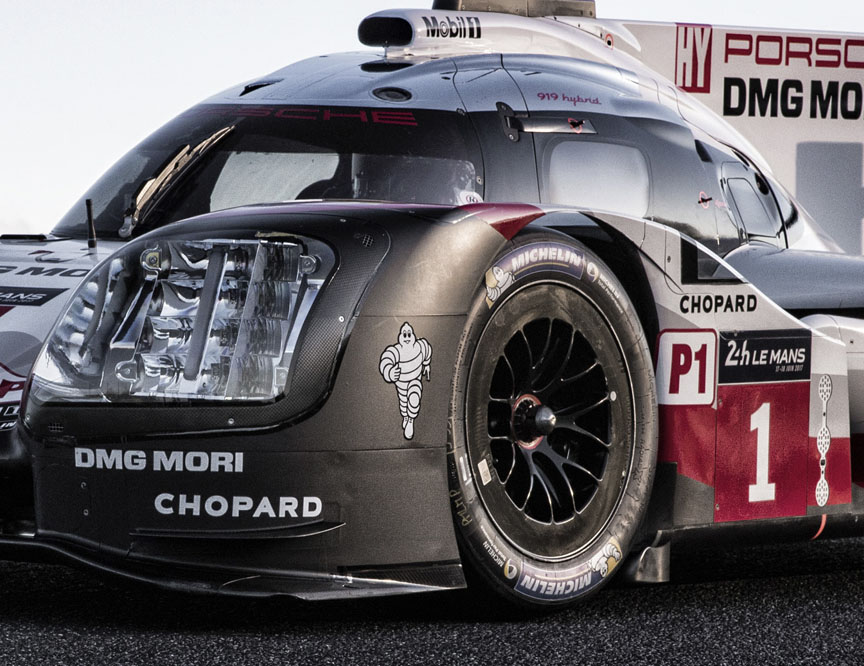
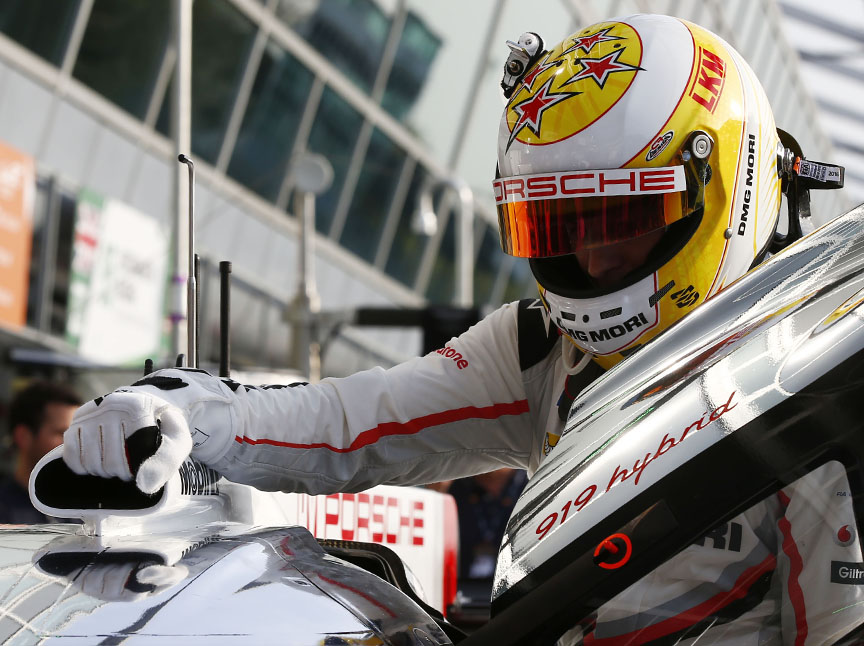
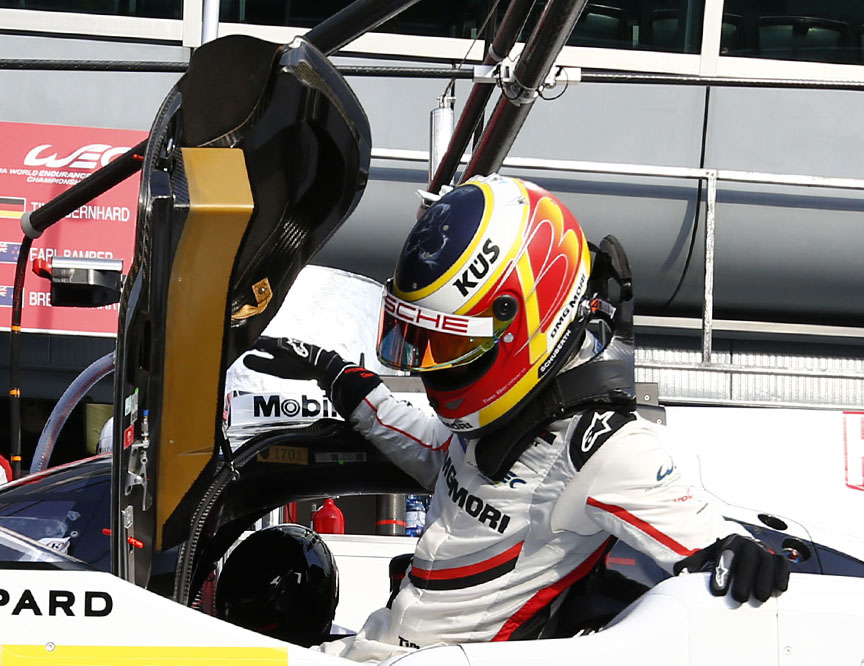
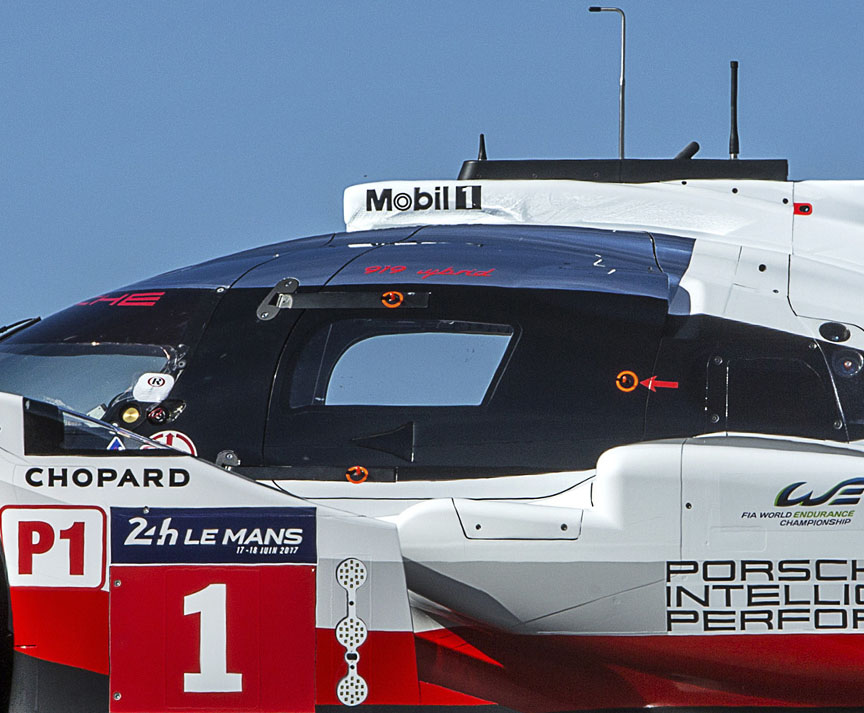
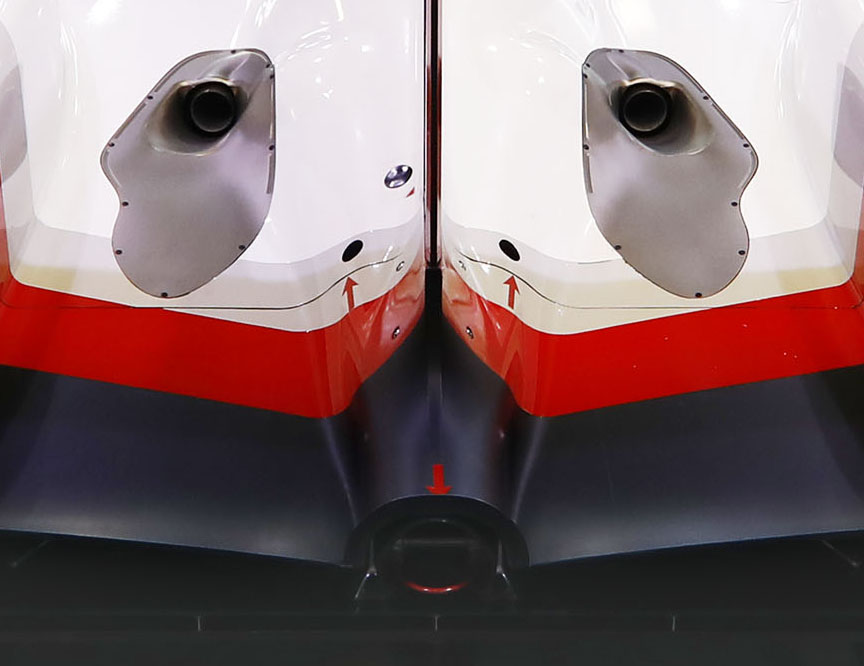
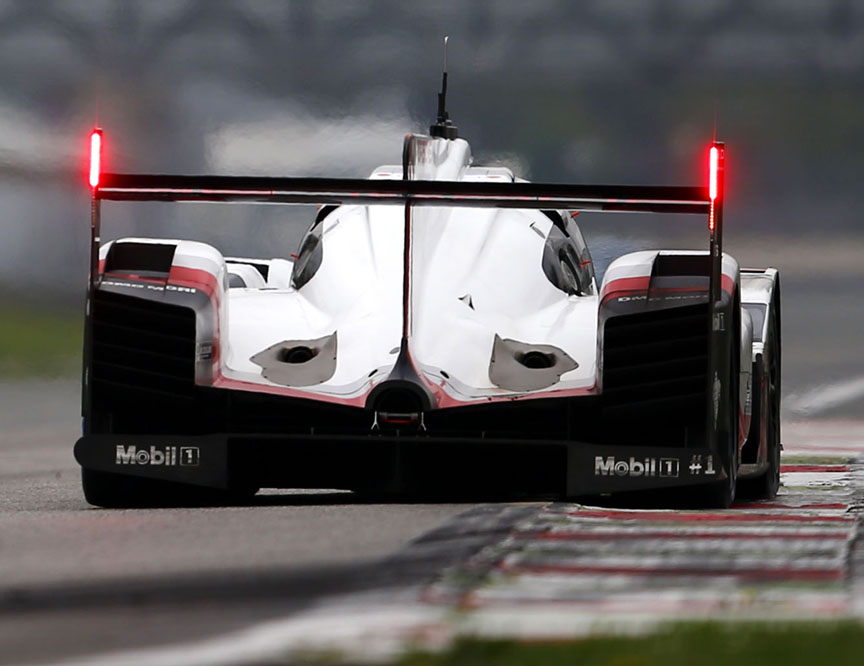
Regular brakes at the back, KERS at the front axle © Porsche
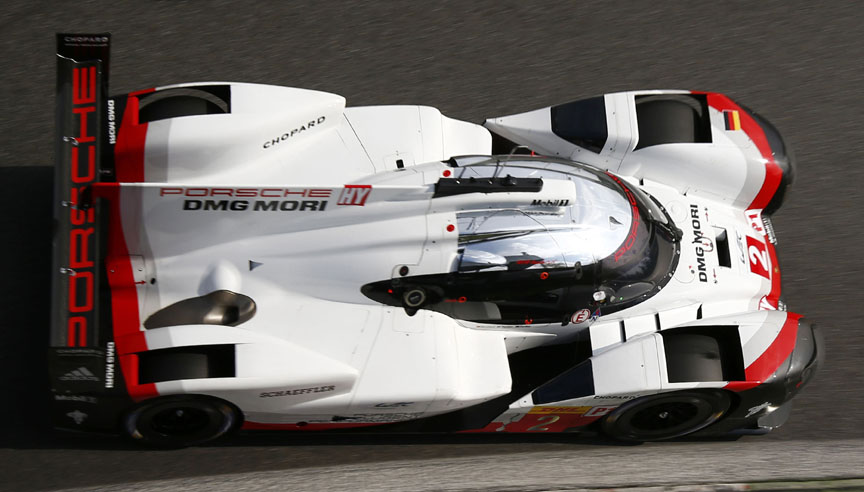
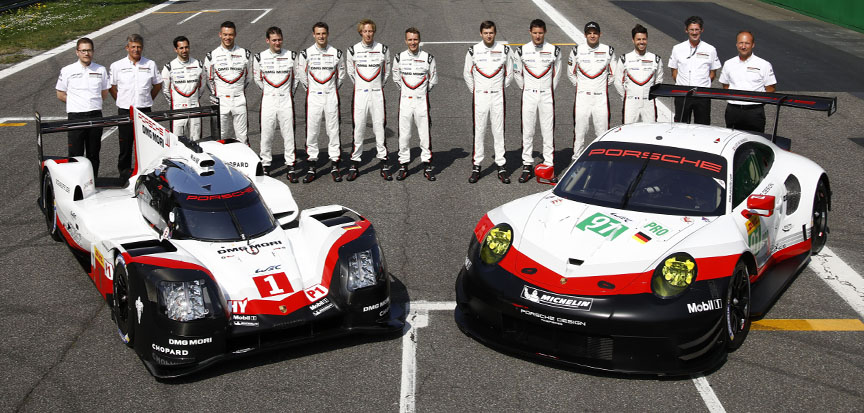
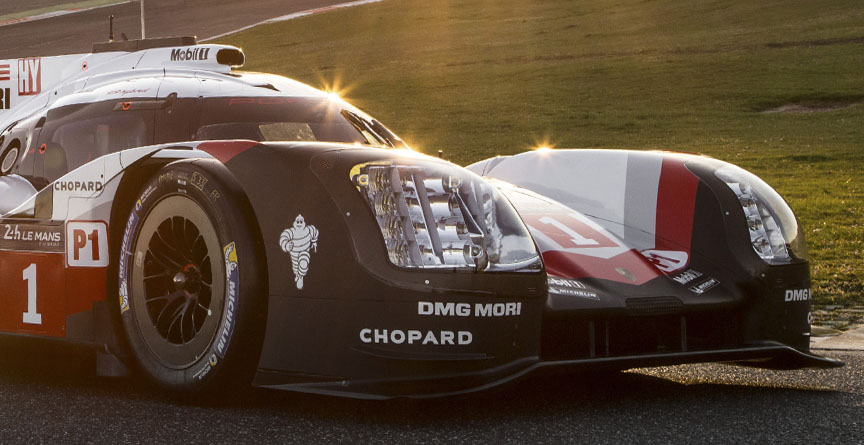
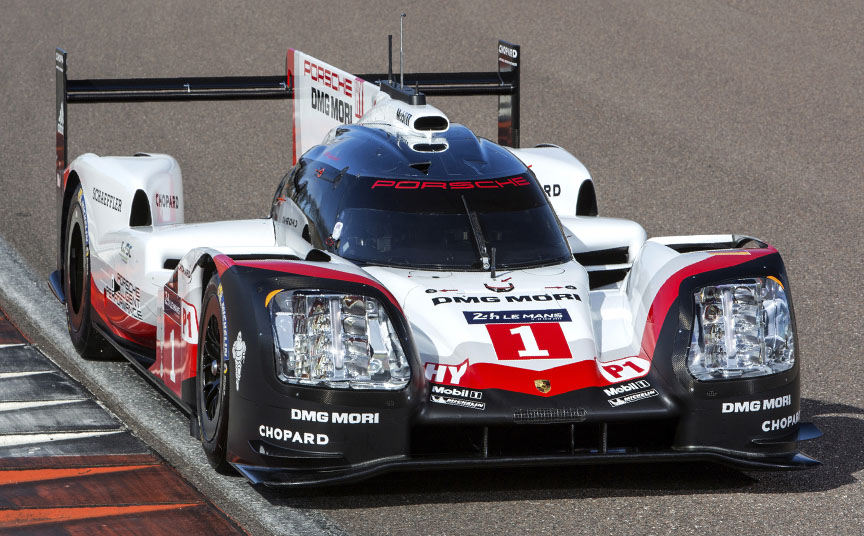
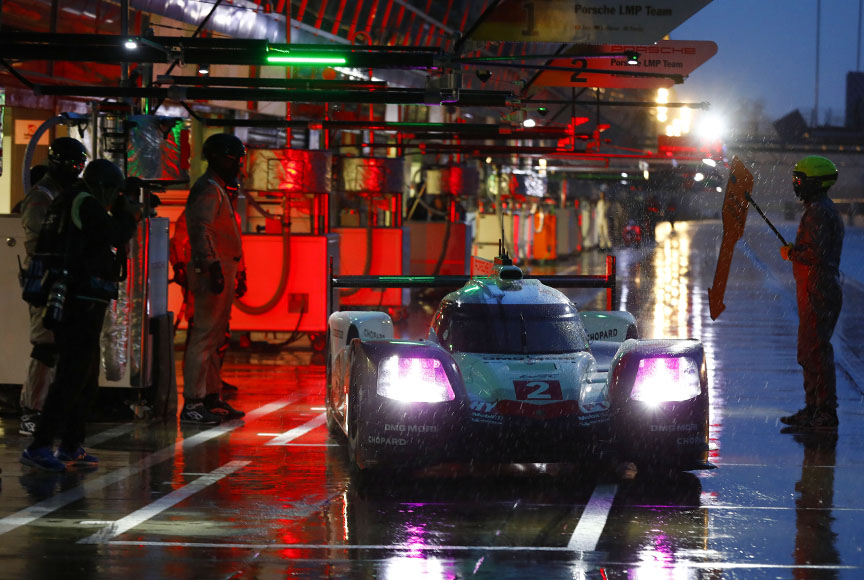
2017 Silverstone 6 hours: 2nd and 3rd Place
Only Porsche and Toyota factory teams are left for the 2017 season in LMP1. One of the Toyotas crashed heavily (but miraculously managed to get to the pits on its own). The other Toyota won the race and Porsches took 2nd and 3rd..
Results Silverstone 6h 2017:
- Toyota TS-050 Hybrid, Buemi/Davidson/Nakajima 197 laps
- Porsche 919 Hybrid, Bernhard/Bamber/Hartley 197 laps
- Porsche 919 Hybrid, Jani/Lotterer/Tandy 197 laps
2017 Spa-Francorchamps 6 hours: 3rd Place
Toyotas demonstrate their strength at this race, taking the top two spots.
Results Spa 6h 2017:
- Toyota TS-050 Hybrid, Buemi/Davidson/Nakajima 173 laps
- Toyota TS-050 Hybrid, Conway/Kobayashi 173 laps
- Porsche 919 Hybrid, Bernhard/Bamber/Hartley 173 laps
- Porsche 919 Hybrid, Jani/Lotterer/Tandy 173 laps
2017 Le Mans Test Day
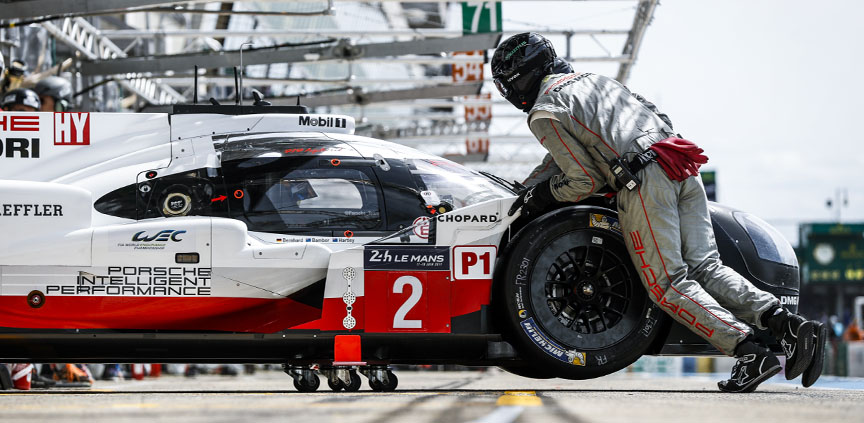
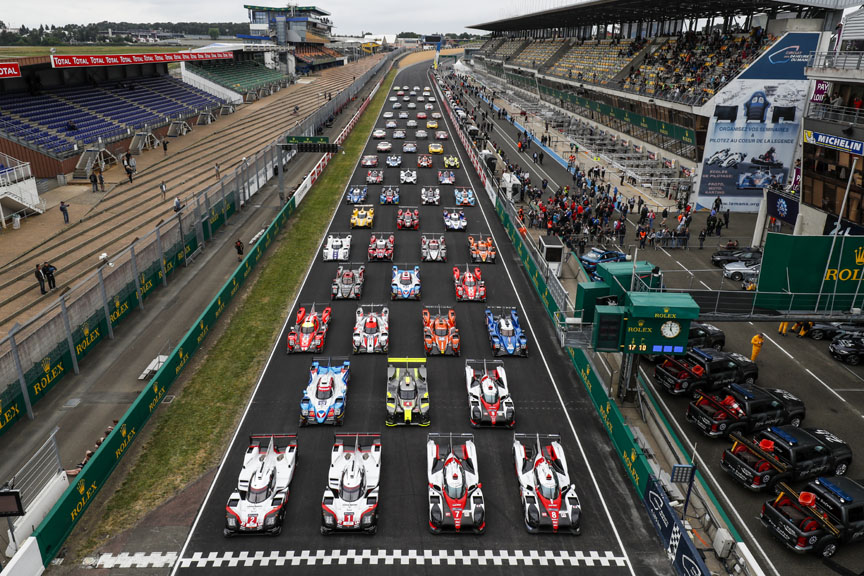
2017 Le Mans 24 Hours
After previous year’s unfortunate for Toyota on the penultimate lap resulting in a “gift victory” for Porsche and Toyota’s wins of the first two rounds of the 2017 FIA WEC, Toyota was determined to win the 2017 Le Mans. Toyota “deserved” to win as its cars had many times showed best speed (polesitters in 1999, 2014 and 2017), but they had not managed to win. To top the expectations, Toyota #7 driver Kamui Kobayashi did something amazing by breaking the fastest average lap speed in the history of Le Mans. His 3:14.791 qualification laptime set him far in front of the Toyota #8 and the Porsche #1 (2.5 seconds slower).
Interestingly, the LMP2 class cars were allowed more power for 2017, so their internal combustion engines were more powerful than the internal combustion engines in the LMP1 cars. Although the LMP1-Hybrid cars had electric motors for out-of-the-corner acceleration, top speed was achieved with the internal combustion engines only as an electric motor cannot help at that speed anymore. This is the first year when LMP2 cars had a higher top speed than LMP1 cars (340+ km/h compared to 330+ km/h). In lap speed the LMP1 were around 10 seconds faster despite the marginal top speed superiority of LMP2 cars. The LMP1-Hybrid cars also required less refueling stops.
3.5 hours into the race with 58 laps done: all the LMP1-Hybrid cars were on the same lap and they had lapped all the LMP2 and GT cars. The first of the fragile hybrid race cars to suffer problems was the Porsche #2 that lost power from its electric motor. With only 500 hp instead of 900 hp peak system power, the car returned to the pits and was taken into the garage. The Porsche #1 continued the fight with the three Toyotas.
It took almost an hour to replace the MGU (motor-generator unit), but Porsche #2 was at least able to continue the competition. They were on the 56th position with 19 laps down from the leading Toyota.
With more than 7 hours into the race, Toyota #8 driver Sébastien Buemi told over the radio to the team that he hears bad noises from the front electric drive system. The team told him that they don’t see anything wrong over the telemetry and he is not allowed to come to the pits before the scheduled pit time. Buemi continued on the second place (a Toyota 1-2 lead) until the MGU failed in his car like it did in the Porsche #2. Toyota #8 came in and promoted the Porsche #1 to second position, now between Toyota #7 and Toyota #9.
At about midnight, both MGU-troubled cars “meet” on the live results list at approximately 30th position, just that Porsche #2 is moving up, but Toyota #8 is still in the garage for repairs and is dropping in the list. A second shock is coming to the Toyota team around quarter to one in the night – the leading Toyota #7 is having a clutch problem and is moving on the track only at 60 km/h with electric power. Unfortunately, the battery died and the car could not get back to the pits. The leader was out. It is said that there was a contributing factor to the clutch failure at the pit lane exit – when #7 Toyota waited for the pit exit to open during the safety car period and an LMP2 driver Vincent Capillaire from the closest pit box ran to the car in his orange suit (marshals also wear orange) giving a thumbs up to support Kobayashi and the latter understanding it was a marshal showing he should go despite the red light at the pit exit. Kobayashi quickly started off with the internal combustion engine while moving off is usually done with electric power only. The fragile clutch got harmed.
Just half an hour after the leading Toyota #7 stopped by the road, the Toyota #9 – that was on the second position – was hit by a #25 LMP2 Oreca from behind and drove off the course. What exactly happened, is not completely clear, but it looked that both drivers – Simon Trummer of #25 Oreca and Nicolas Lapierre of #9 Toyota – had their share in the situation that led to the accident.
The left rear tyre of the #9 Toyota was broken. While trying to get back to the pits on three tyres, the broken tyre damaged the car even more and it catched fire. The on-board fire extinguishing system put the fire out, but the car was unable to get to the pits. What a drama – a drama so huge, it almost feels tragic.
With all Toyotas out (#8 still in the race, but far-far behind), the second and third positions were taken by Oreca 07 Gibson LMP2 cars – 8 and 9 laps down from the leading Porsche #1.
Shocking news arrived for the Porsche team after 11 o’clock – the leading Porsche #1 lost its internal combustion engine.
The Porsche 919 #1 had covered 318 laps and was 14 laps ahead of the second position LMP2 car. The Porsche #2 had crawled up the competitor list and was now on 5th position with three LMP2 cars between the Porsches. With the retirement of the #1, the first three positions were taken by LMP2 cars with Porsche #2 chasing them. The LMP2 cars were 1, 2 and 4 laps ahead, but were approximately 10 seconds per lap slower, so it takes the LMP1 Porsche 20 or so laps to unlap a lap with the LMP2 car.
#2 is the new hope for Porsche. It is on the final hour of the race, that the #2 takes overall lead.
Earl Bamber, Timo Bernhard and Brendon Hartley won the 2017 Le Mans 24h race – from 56th position to victory!
It was the 19th victory for Porsche and 3rd in a row. Bernhard and Bamber scored their second victory at Le Mans, Hartley won for the first time. The victory was even more special as Porsche had won with a repaired car and not because of Toyota’s bad luck as it would have been the case when Porsche #1 would have won.
Results Le Mans 24h 2017:
- Porsche 919 Hybrid, Bernhard/Bamber/Hartley 367 laps
- Oreca 07 Gibson LMP2, Tung/Laurent/Jarvis 366 laps
- Oreca 07 Gibson LMP2, Cheng/Gommendy/Brundel 363 laps
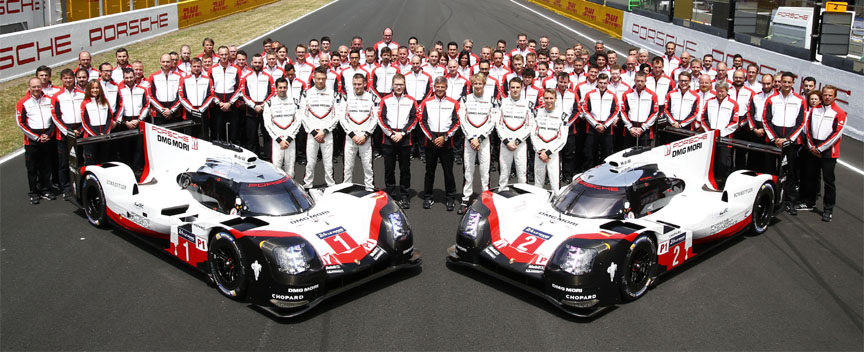
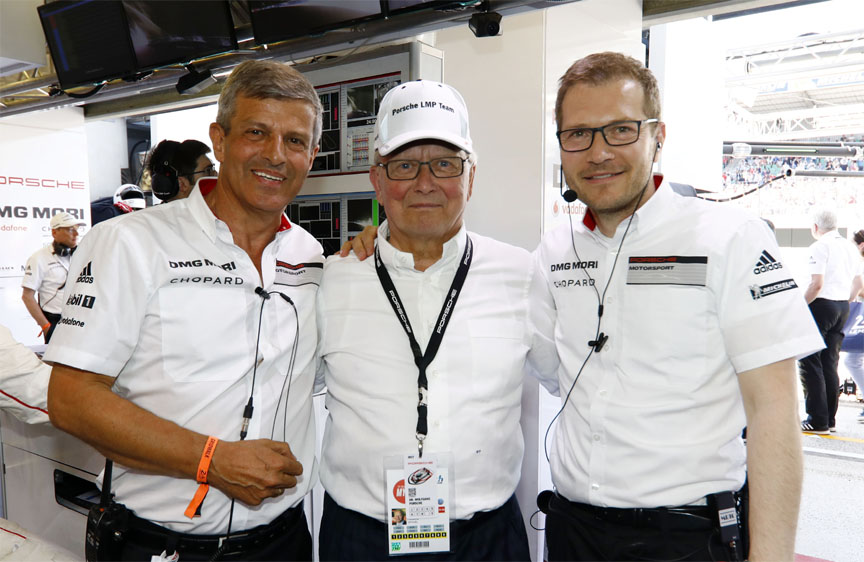
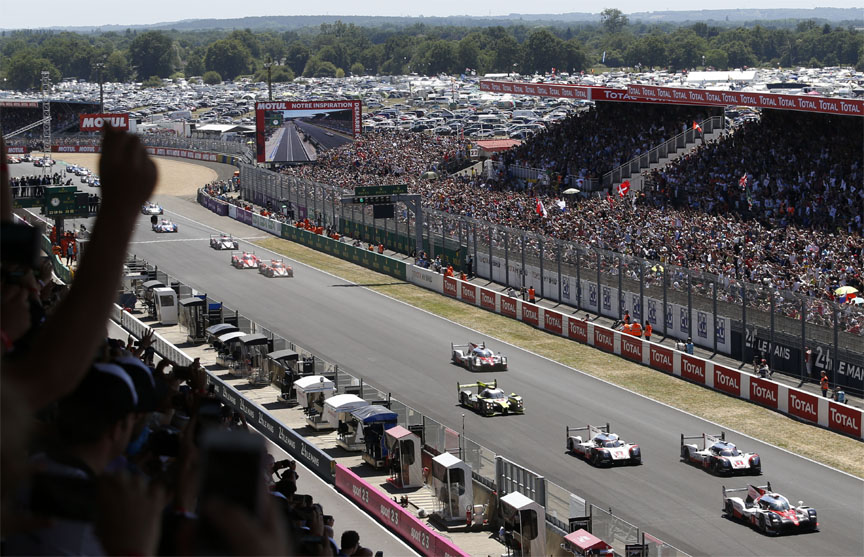
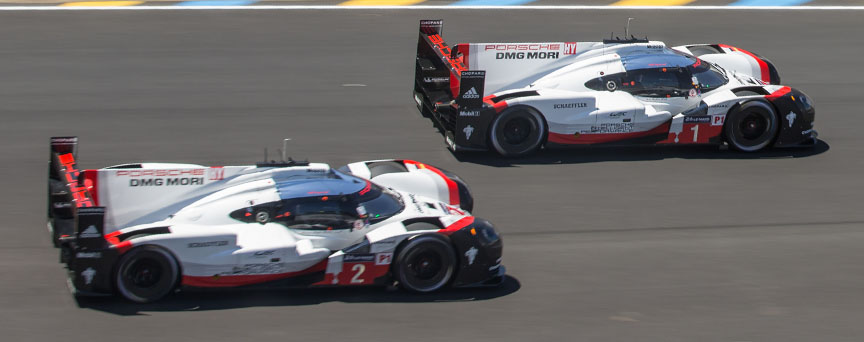
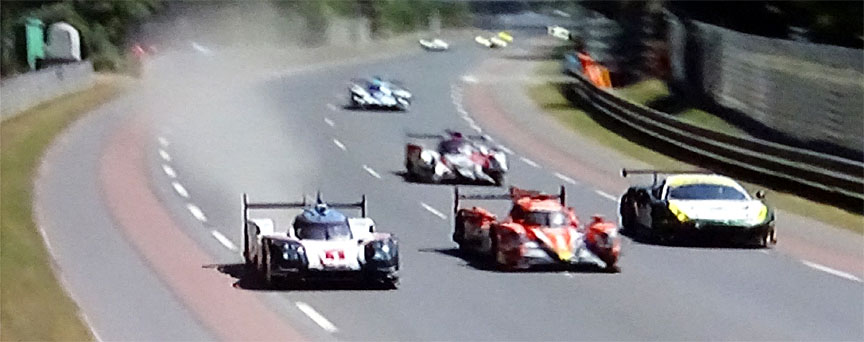
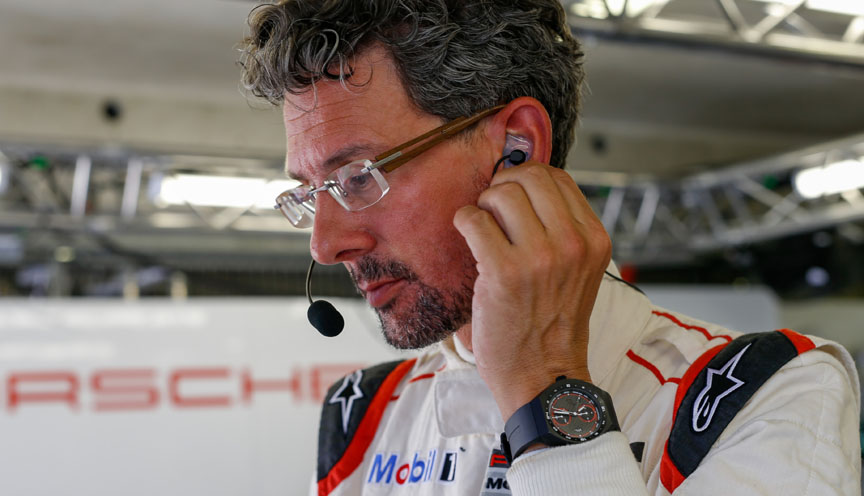
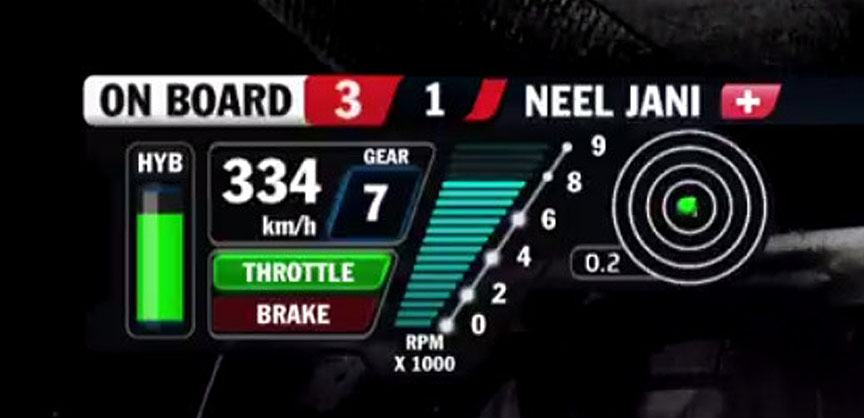
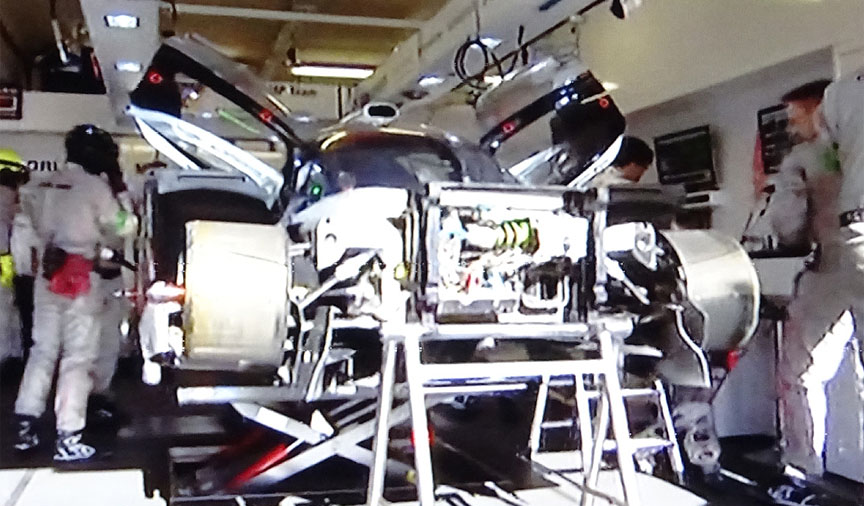
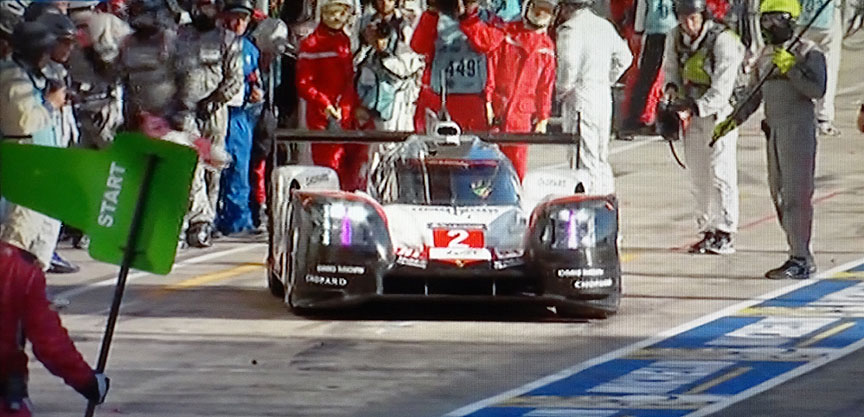
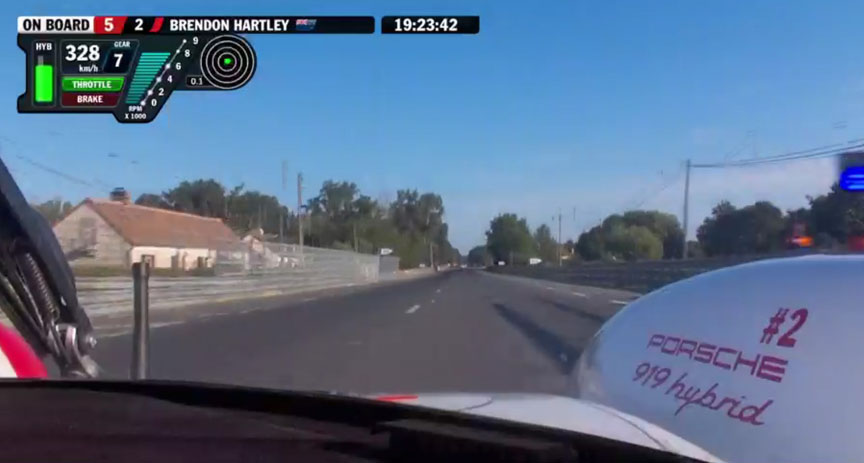
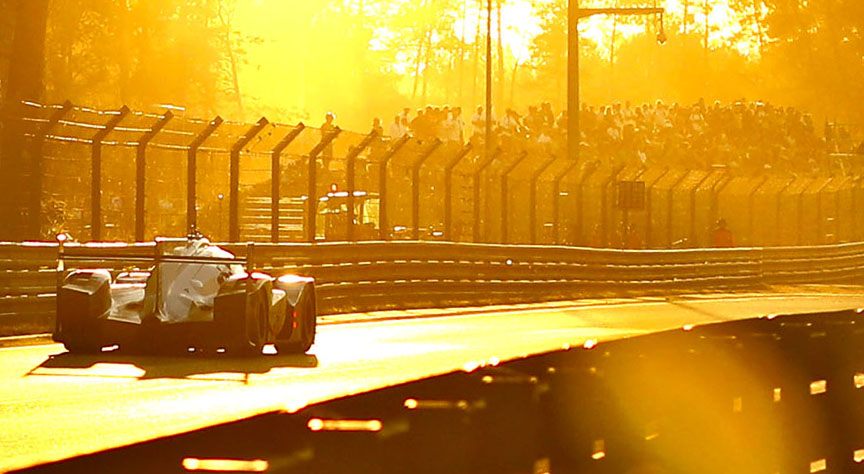
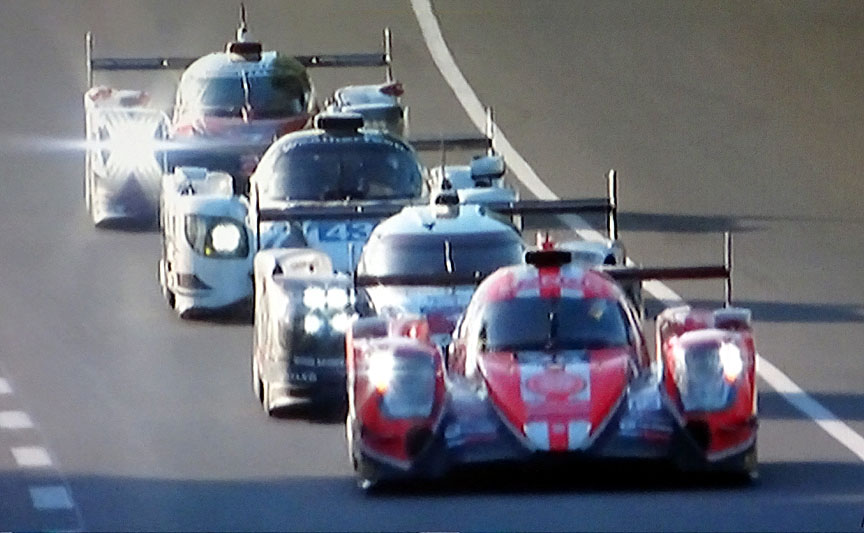
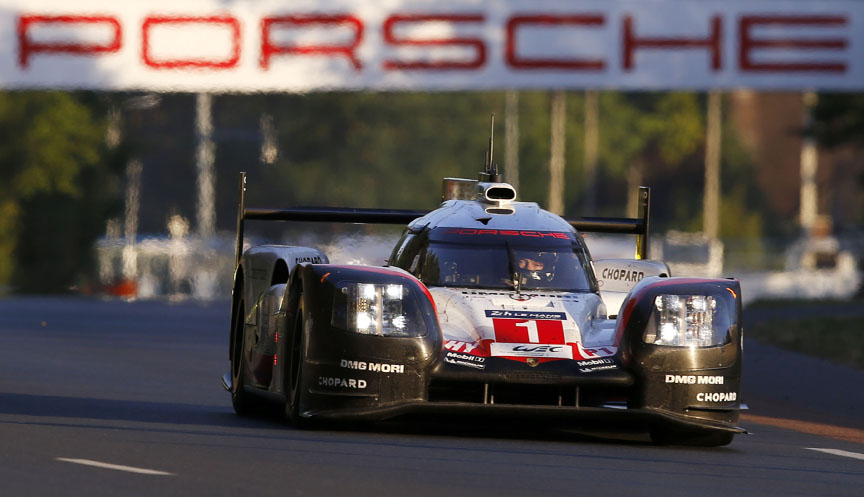
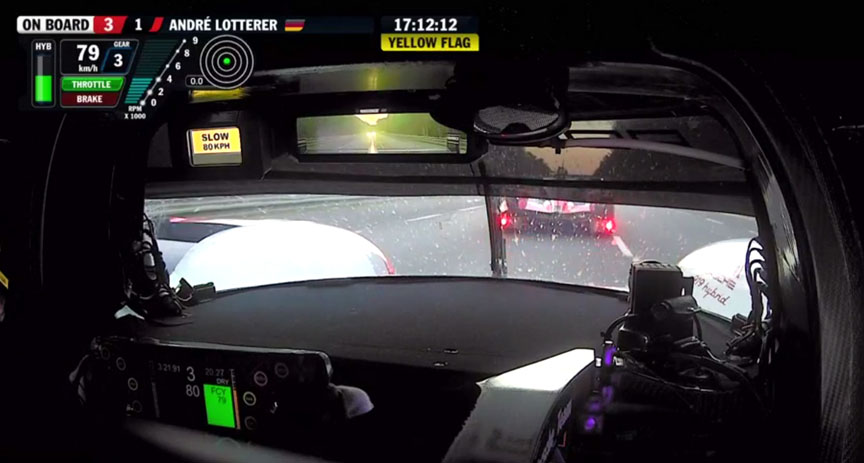
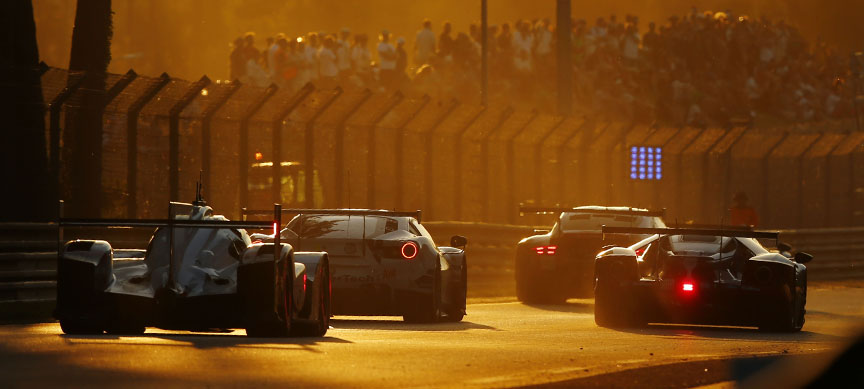

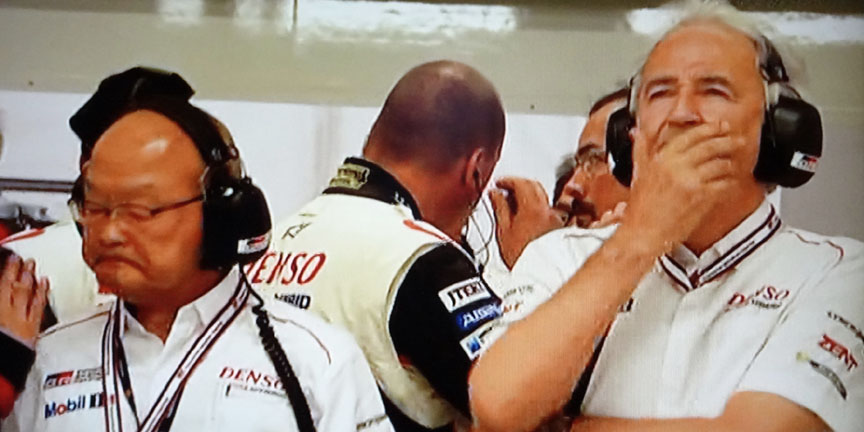
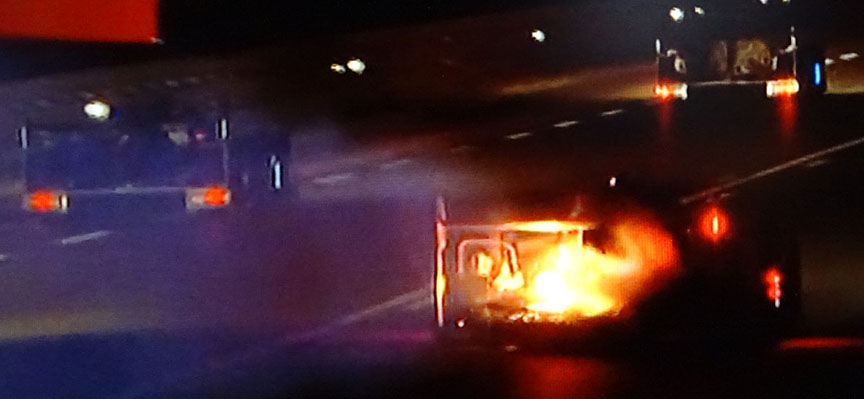
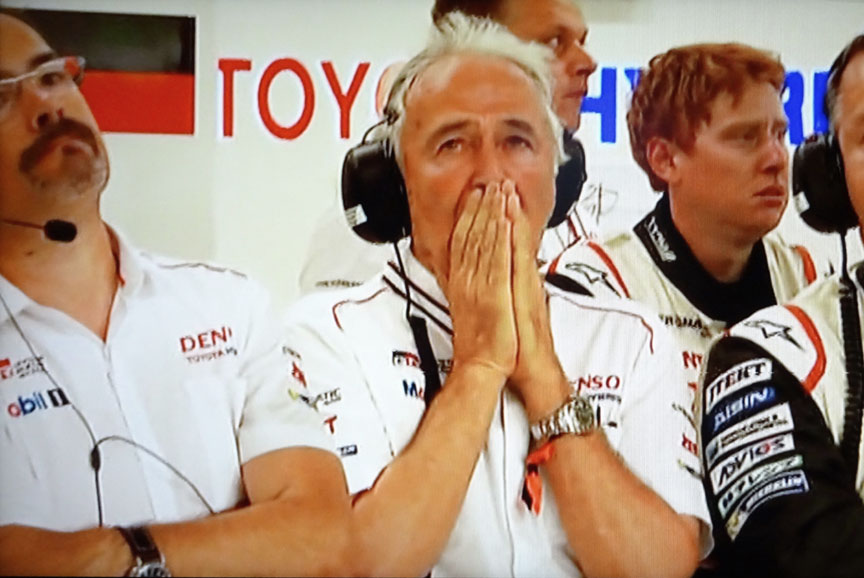
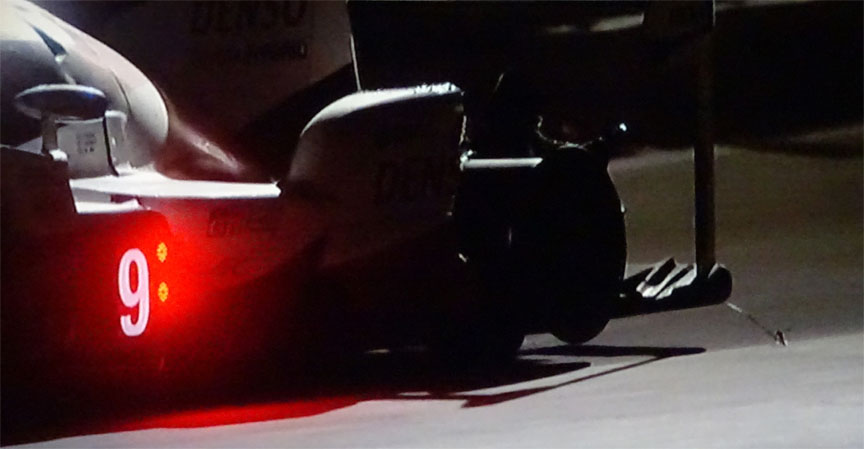
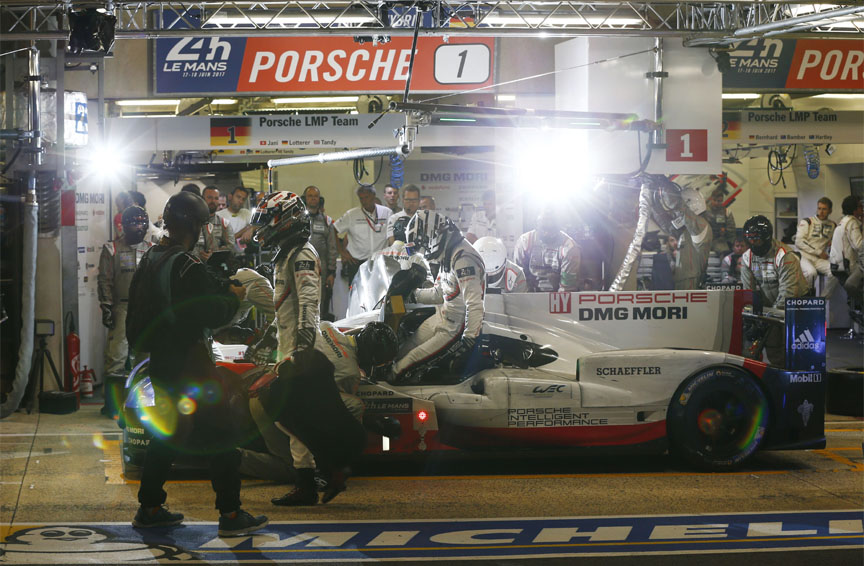
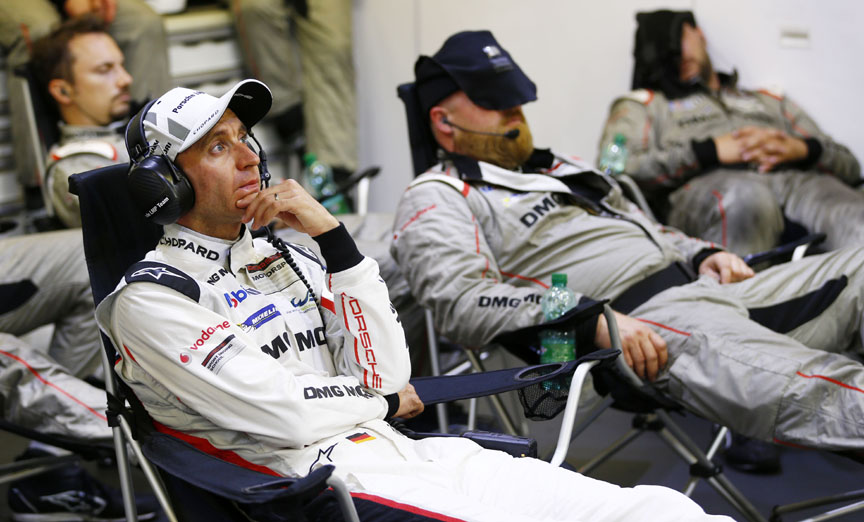
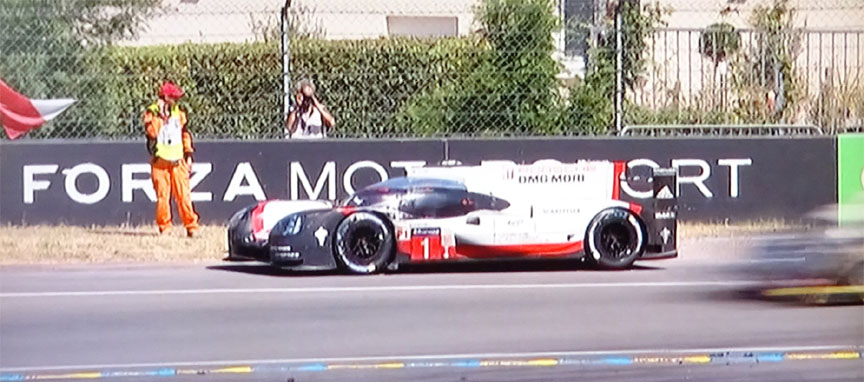
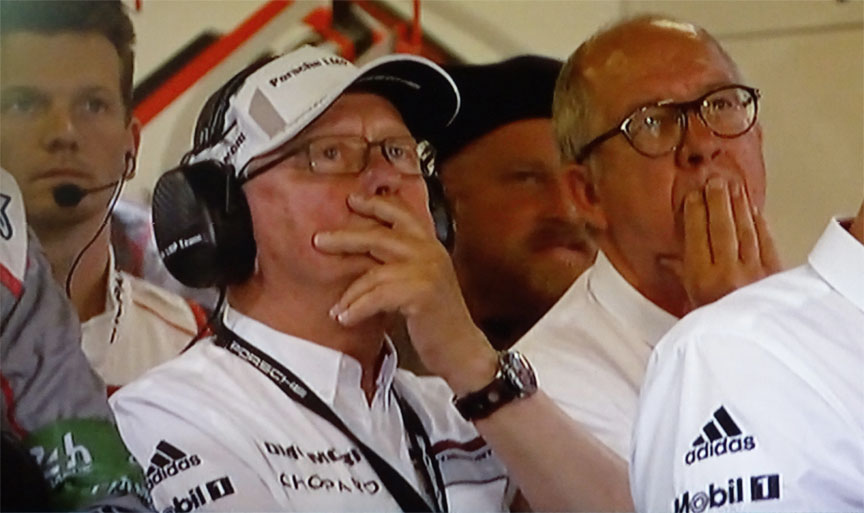
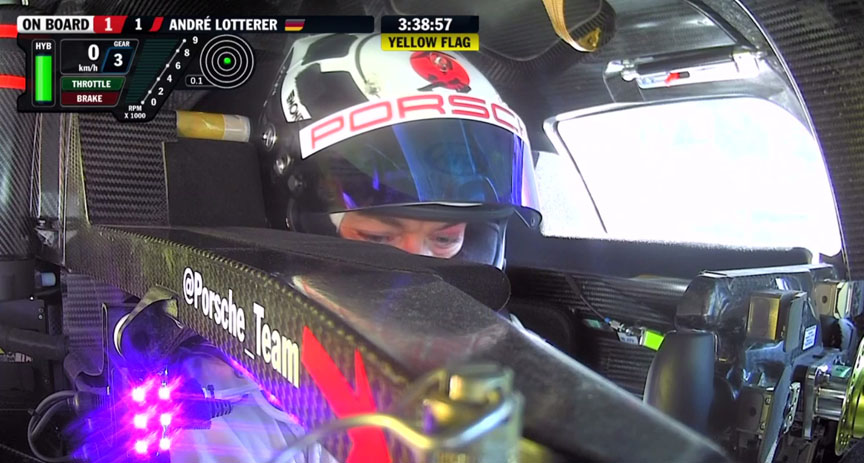
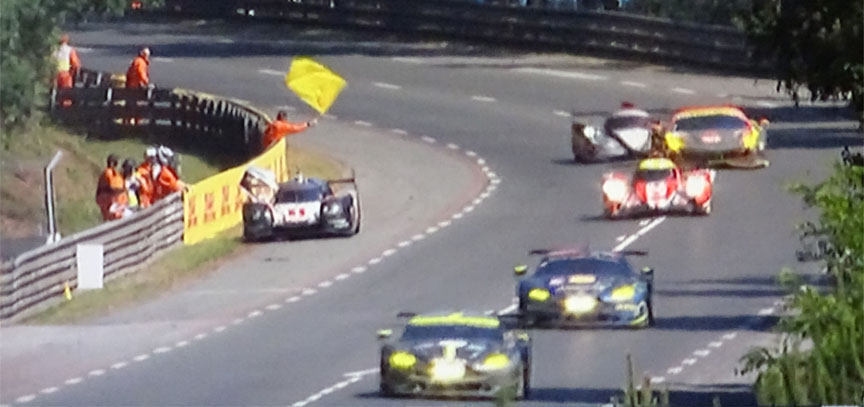
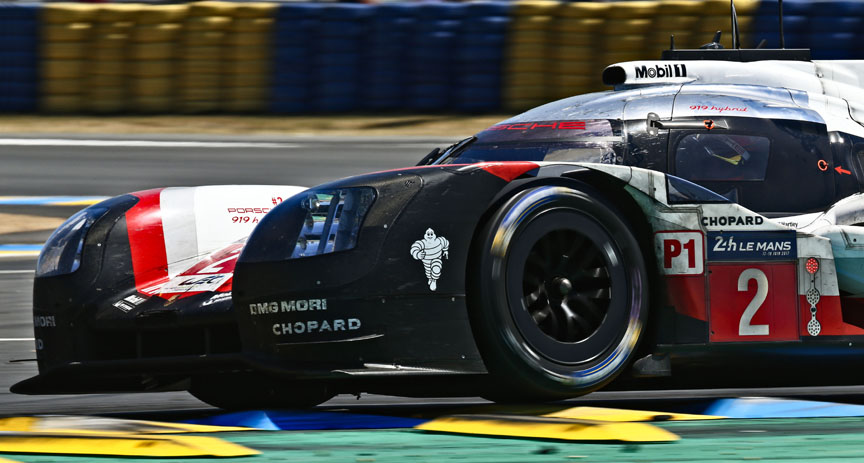
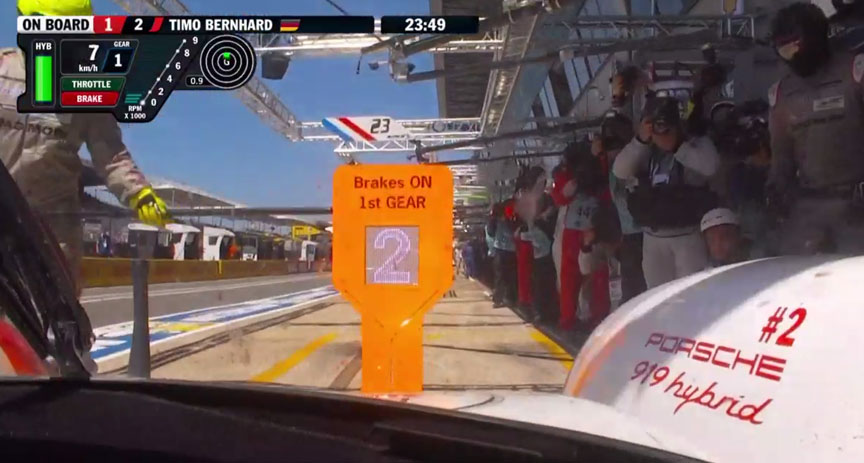
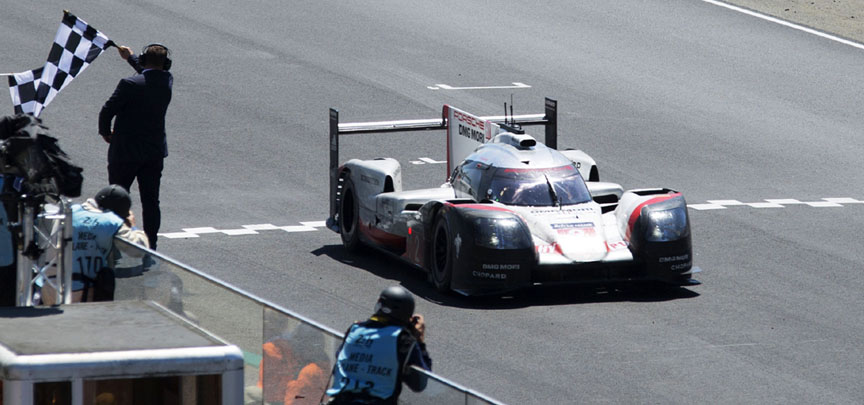
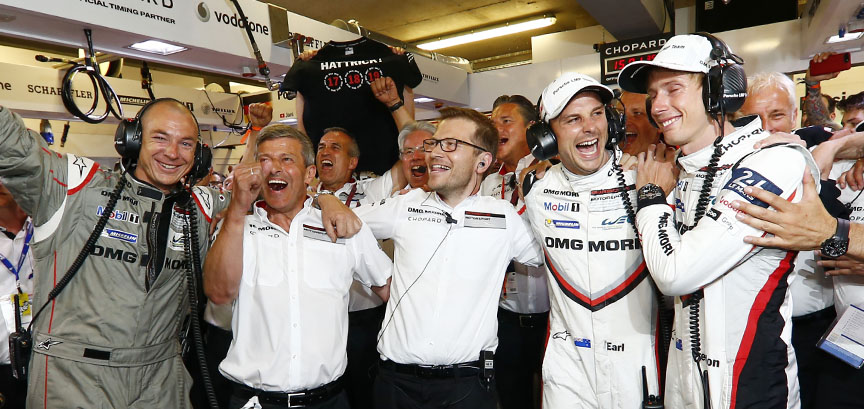
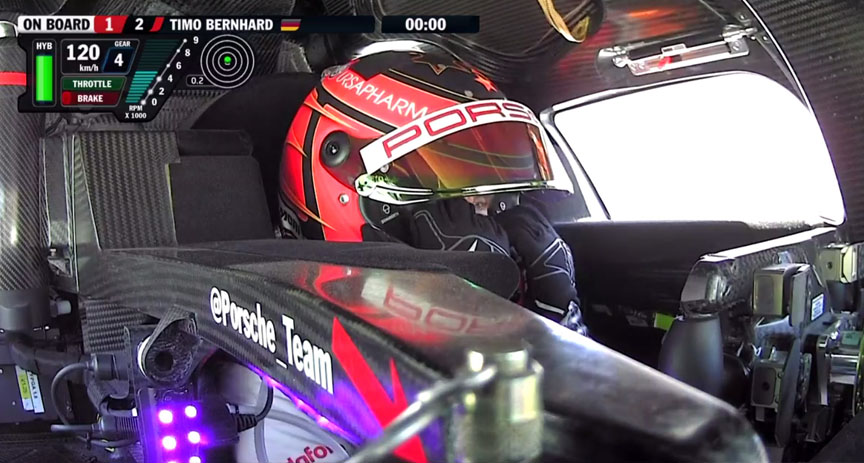
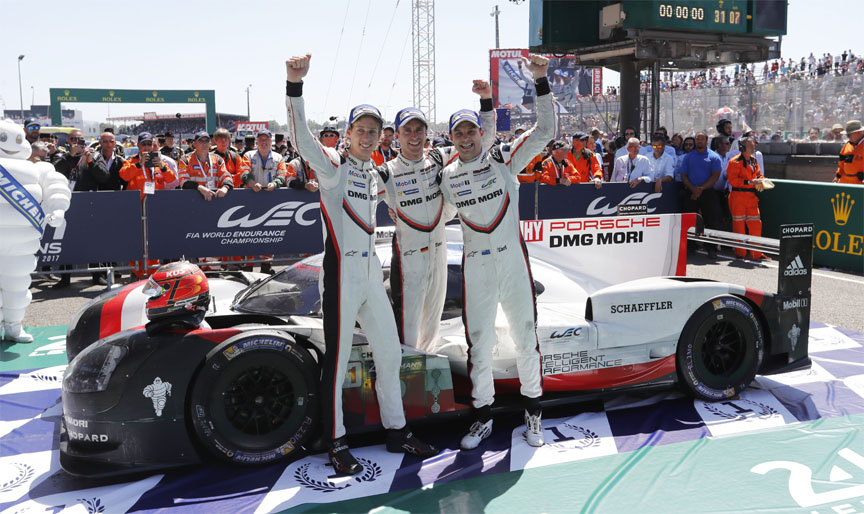
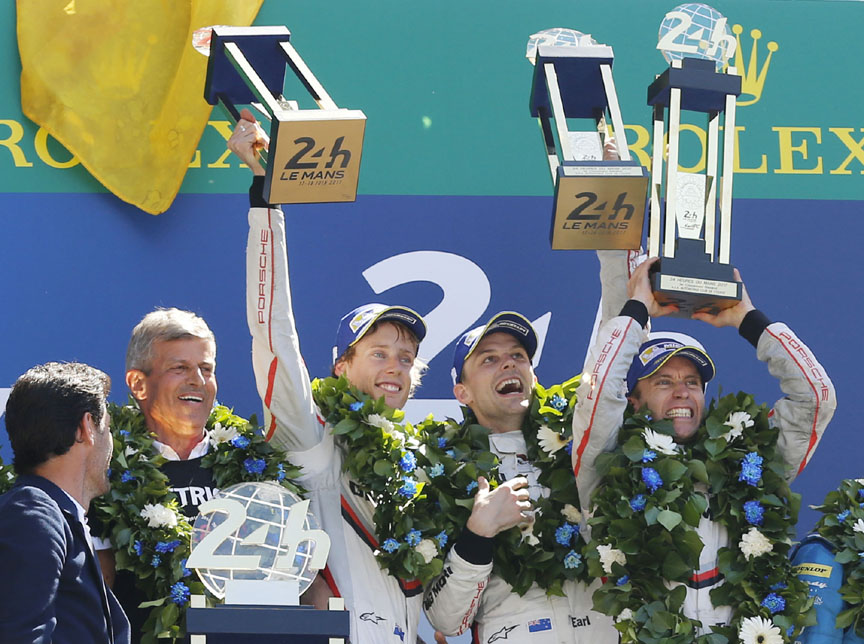
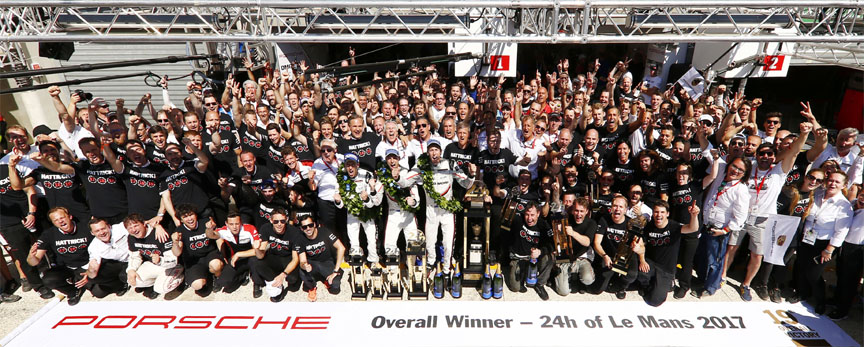
2017 Nürburgring 6 hours: New Aero and 1-2 Victory
For the beginning of the season, the priority was in perfecting the low drag version of the 919-17 for the high-speed Le Mans circuit. After that the focus was on the high-downforce version of the 919-17. Seen for the first time at the 4th race of the 2017 FIA WEC at the Nürburgring, the high-downforce version looked much more appealing. Instead of the bulky front with “larger than life” headlamps was the more sloped nose with much smaller headlamps. The rear view was significantly different from the earlier low-drag high-speed version.
Timo Bernhard and Brendon Hartley won the Nürburgring 6 hour race for the third year in a row. In 2015 and 2016 they did it with Mark Webber, now with Earl Bamber.
Results Nürburgring 6h 2017:
- Porsche 919 Hybrid, Bernhard/Bamber/Hartley 204 laps
- Porsche 919 Hybrid, Jani/Lotterer/Tandy 204 laps
- Toyota TS-050 Hybrid, Conway/Kobayashi/Lopez 204 laps
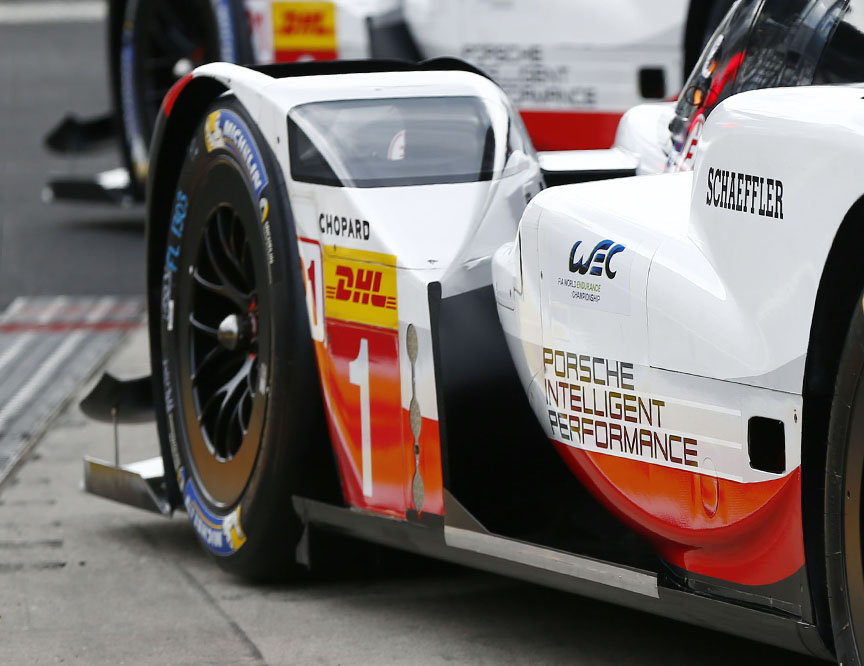
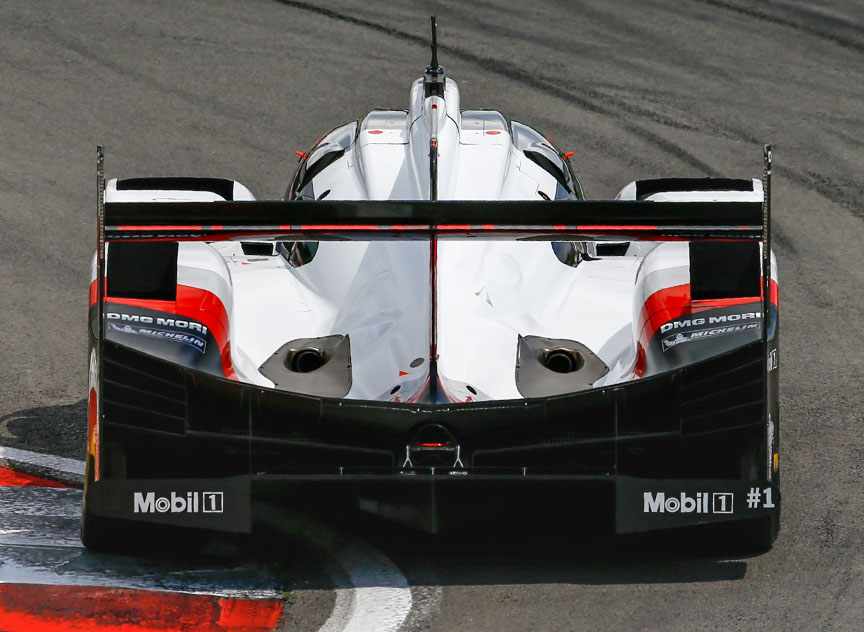
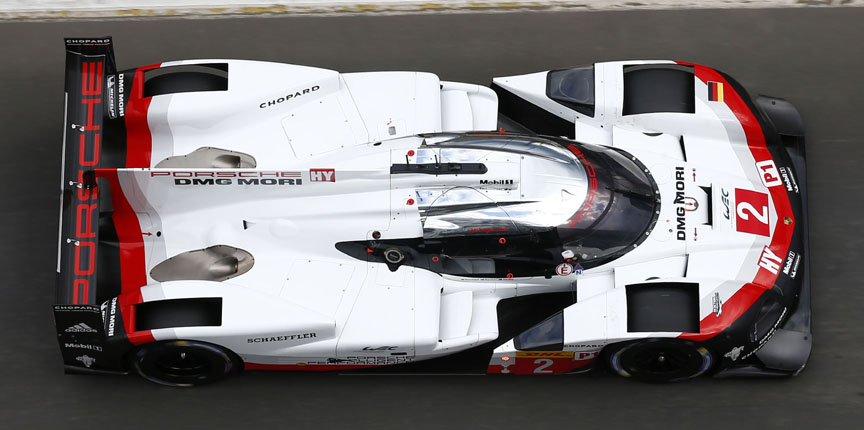
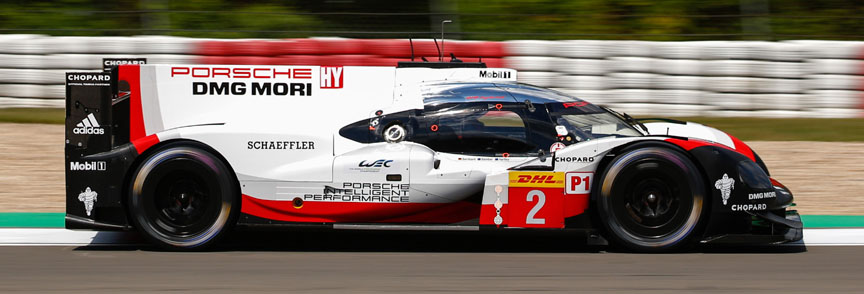
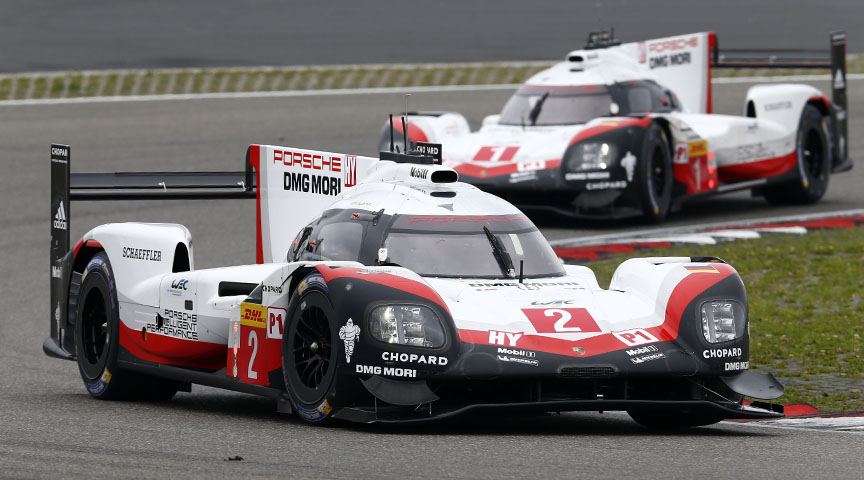
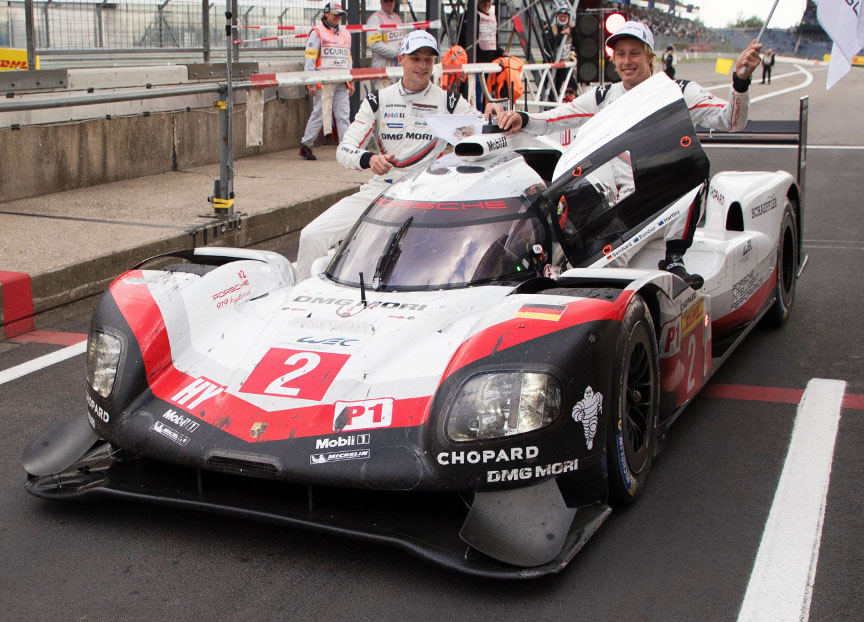
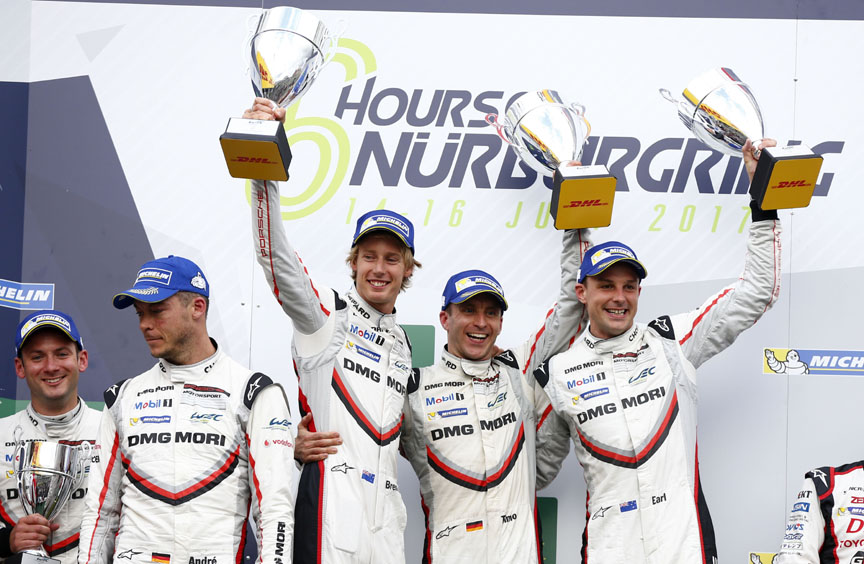
2017 Mexico 6 hours: 1-2 Victory
Results Mexico 6h 2017:
- Porsche 919 Hybrid, Bernhard/Bamber/Hartley 240 laps
- Porsche 919 Hybrid, Jani/Lotterer/Tandy 240 laps
- Toyota TS-050 Hybrid, Buemi/Davidson/Nakajima 239 laps
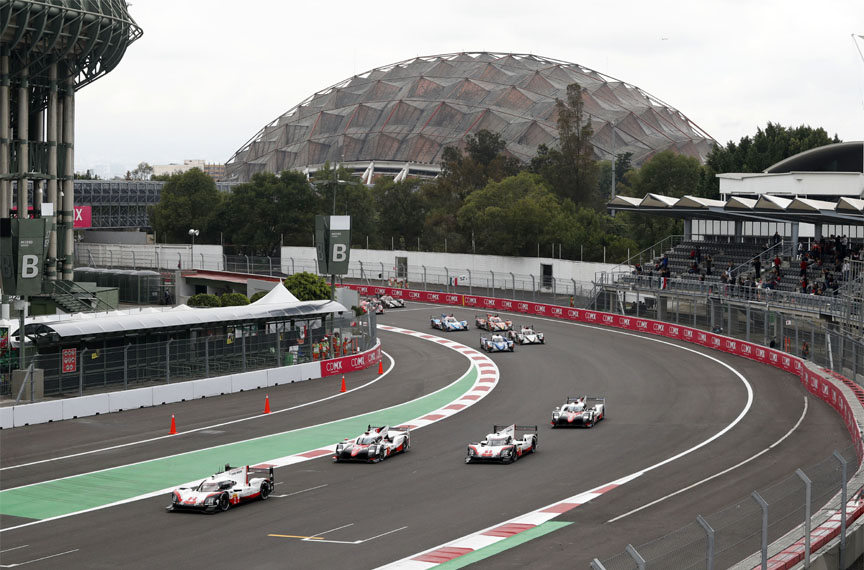
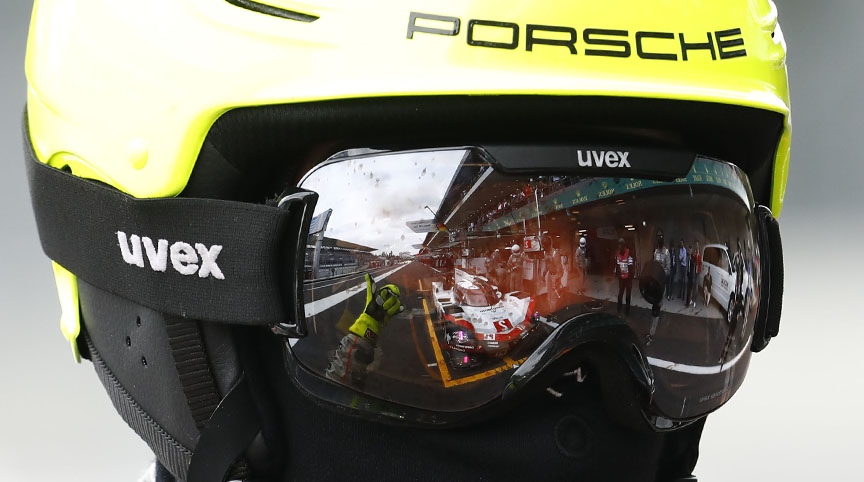
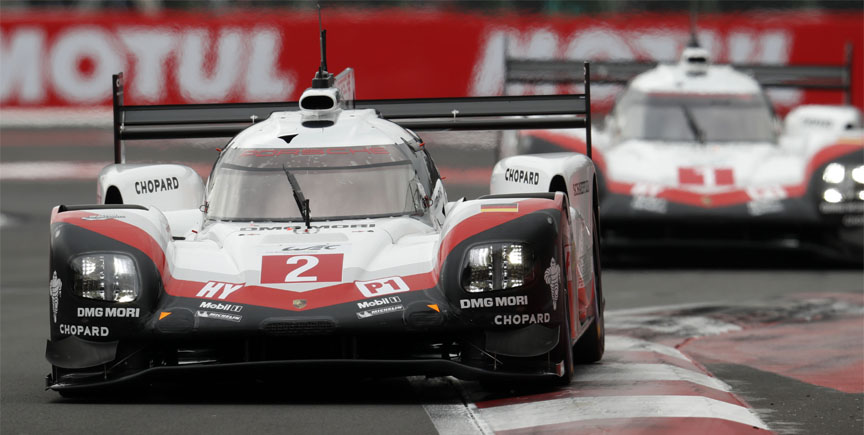
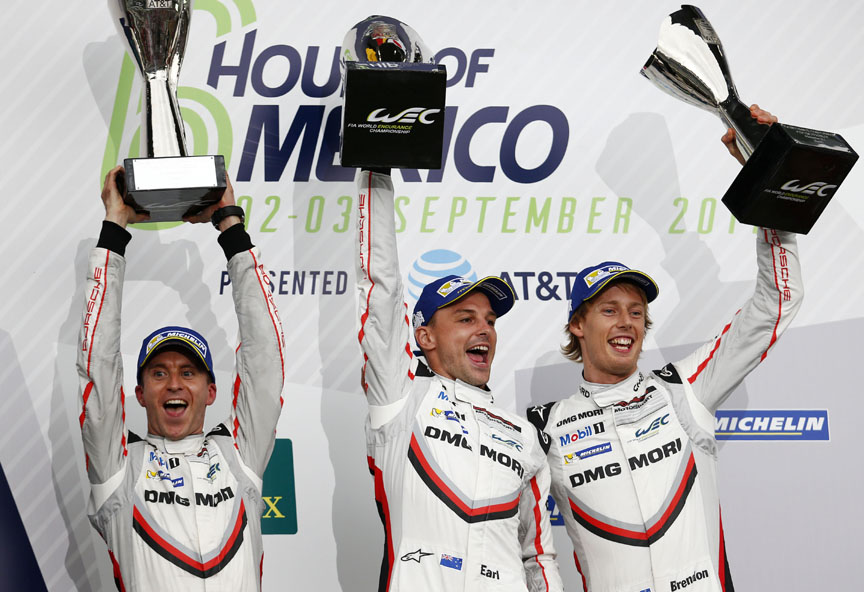
2017 COTA (Circuit of the Americas) 6 hours: 1-2 Victory
Results COTA 6h 2017:
- Porsche 919 Hybrid, Bernhard/Bamber/Hartley 192 laps
- Porsche 919 Hybrid, Jani/Lotterer/Tandy 192 laps
- Toyota TS-050 Hybrid, Buemi/Sarrazin/Nakajima 192 laps
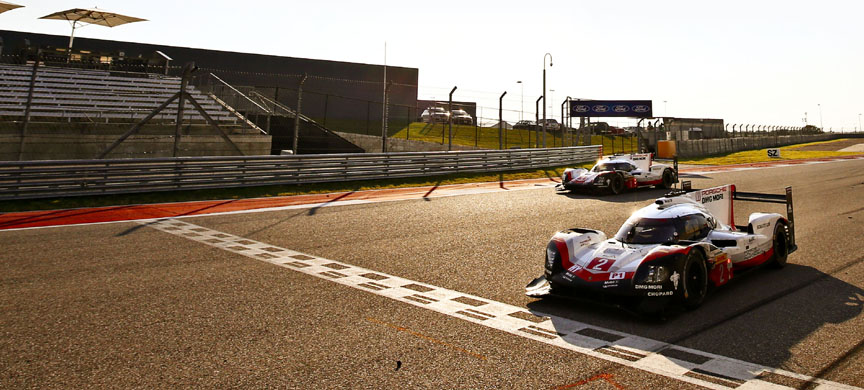
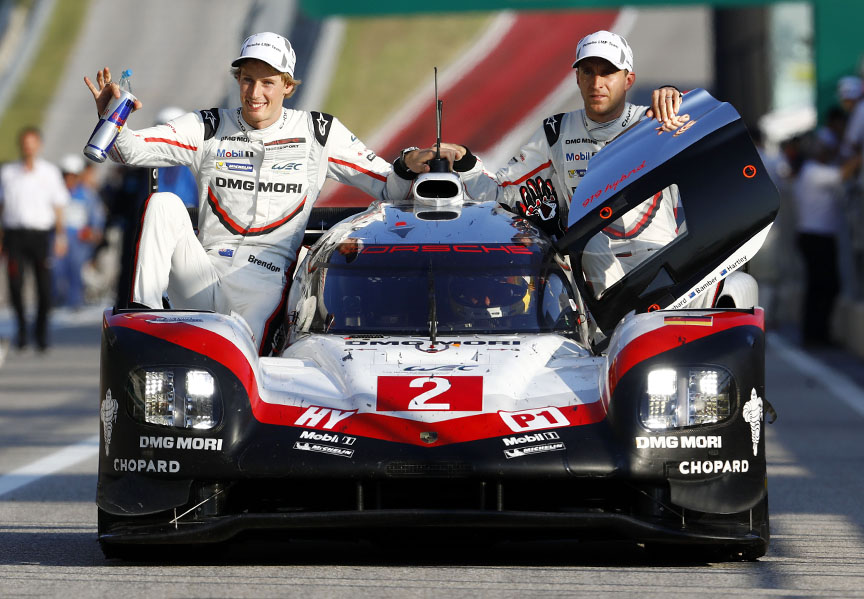
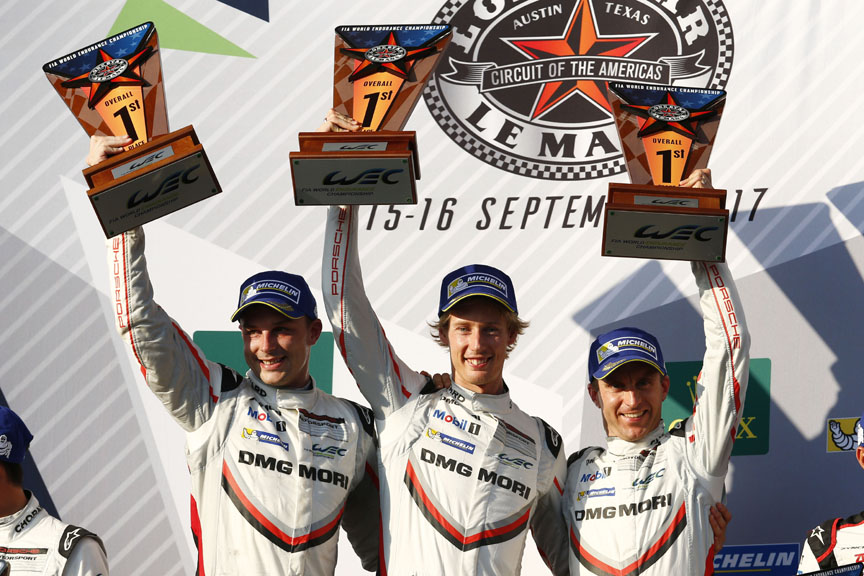
2017 Fuji 6 hours: 3rd Place
The full weekend was hampered by heavy rain and the race was stopped after 4 hours and 31 minutes. As 75% of the race distance was covered, it meant full points were awarded. Best Porsche finished third right behind the two Toyotas (just 2 seconds after the winner)
Results Fuji 6h 2017:
- Toyota TS-050 Hybrid, Buemi/Davidson/Nakajima 113 laps
- Toyota TS-050 Hybrid, Conway/Kobayashi/Lopez 113 laps
- Porsche 919 Hybrid, Jani/Lotterer/Tandy 113 laps
2017 Shanghai 6 hours: 2nd and 3rd Place
Finishing second in Shanghai, at the penultimate race of the season, Earl Bamber, Timo Bernhard and Brendon Hartley became 2017 FIA World Endurance Driver’s Championship winners and Porsche became the 2017 FIA WEC Manufacturer’s Championship winner. This marks the second driver’s world championship in the WEC for Bernhard and Hartley. With 12 race victories between them, the two are the most successful long-distance drivers in WEC history. Porsche won the FIA WEC LMP1 in both the manufacturer’s and driver’s category for three years in a row from 2015 to 2017.
Results Shanghai 6h 2017:
- Toyota TS-050 Hybrid, Buemi/Davidson/Nakajima 195 laps
- Porsche 919 Hybrid, Bernhard/Bamber/Hartley 194 laps
- Porsche 919 Hybrid, Jani/Lotterer/Tandy 194 laps
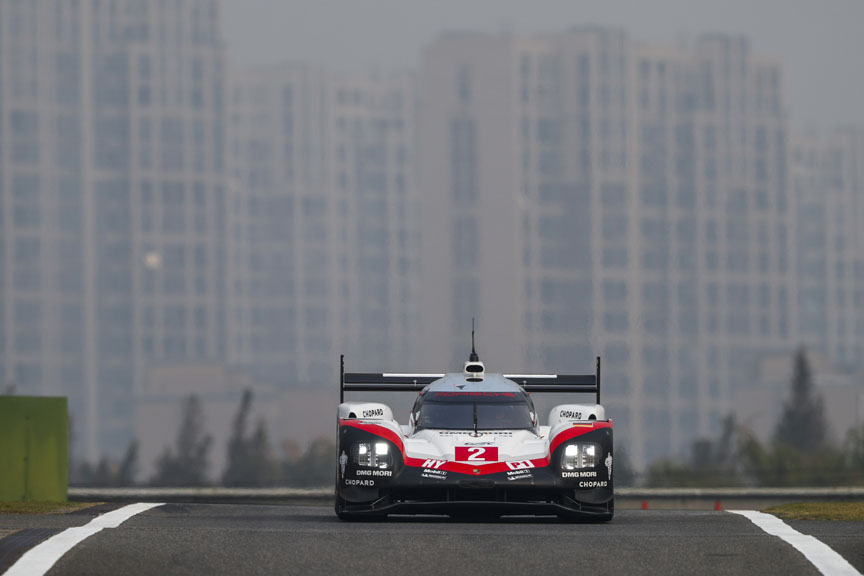
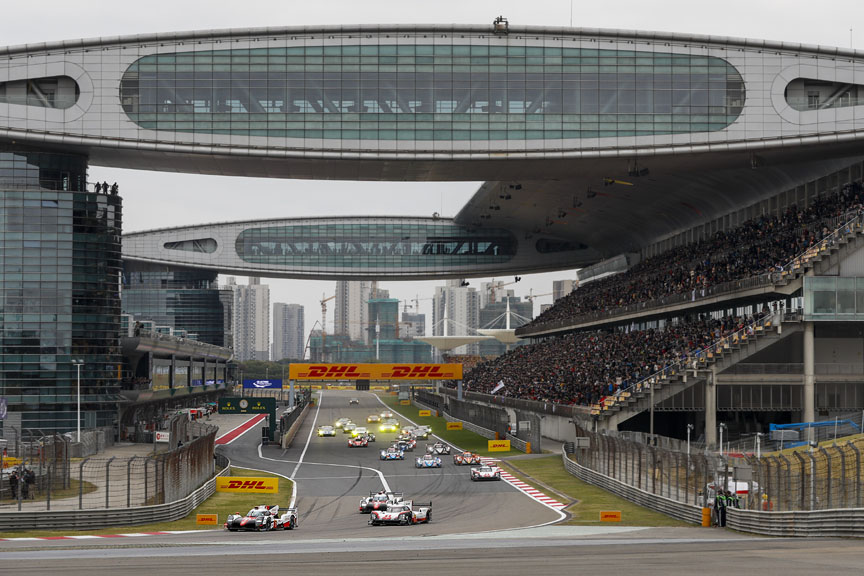
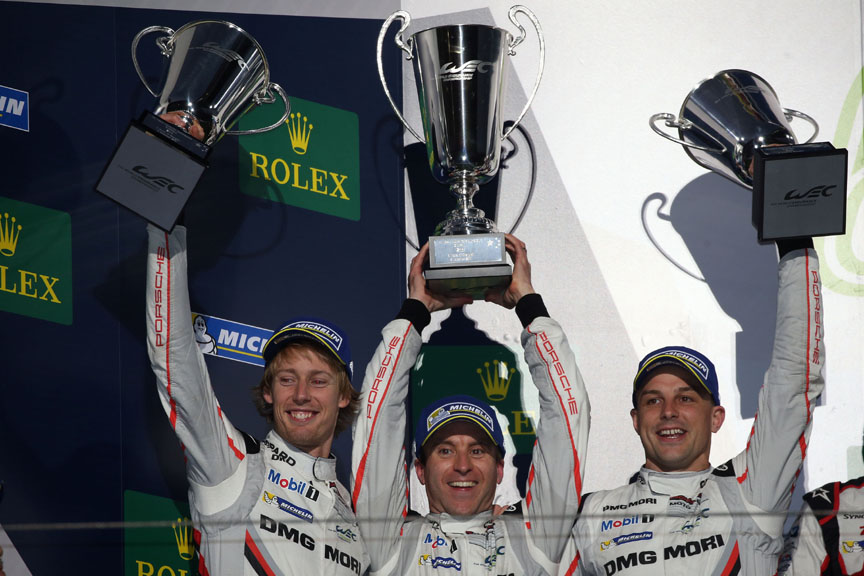
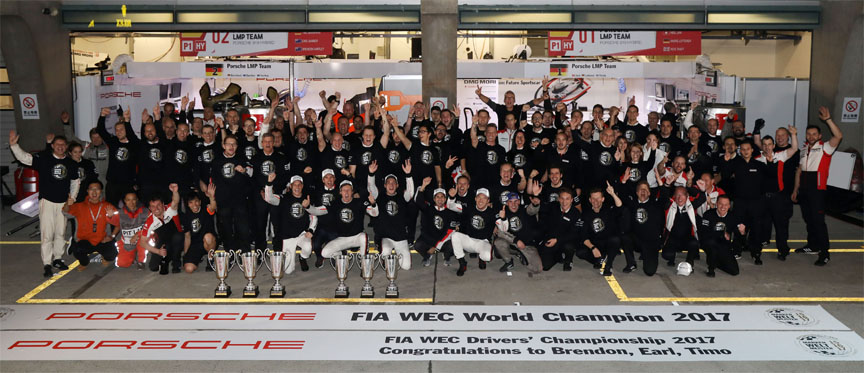
2017 Bahrain 6 hours: 2nd and 3rd Place
Results Bahrain 6h 2017:
- Toyota TS-050 Hybrid, Buemi/Davidson/Nakajima 199 laps
- Porsche 919 Hybrid, Bernhard/Bamber/Hartley 198 laps
- Porsche 919 Hybrid, Jani/Lotterer/Tandy 198 laps
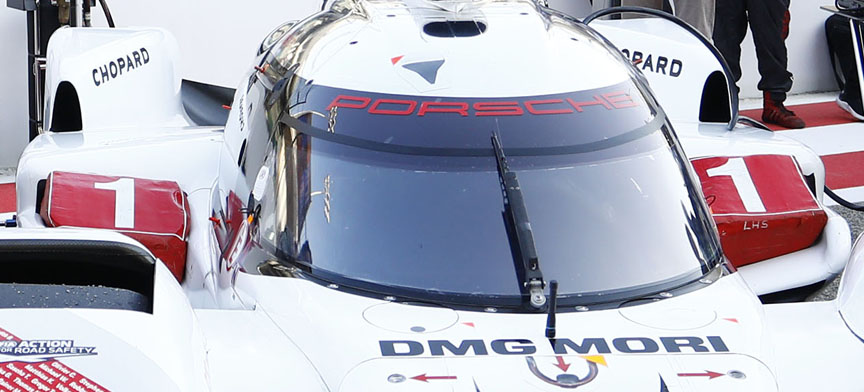
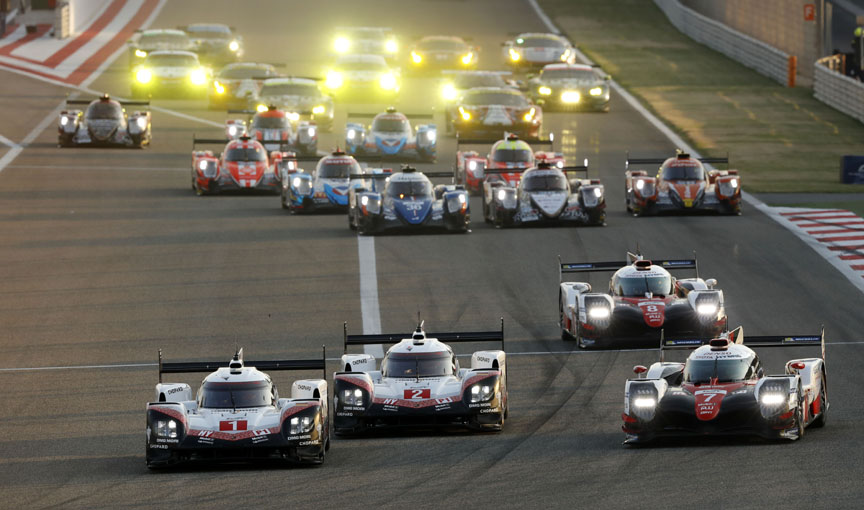
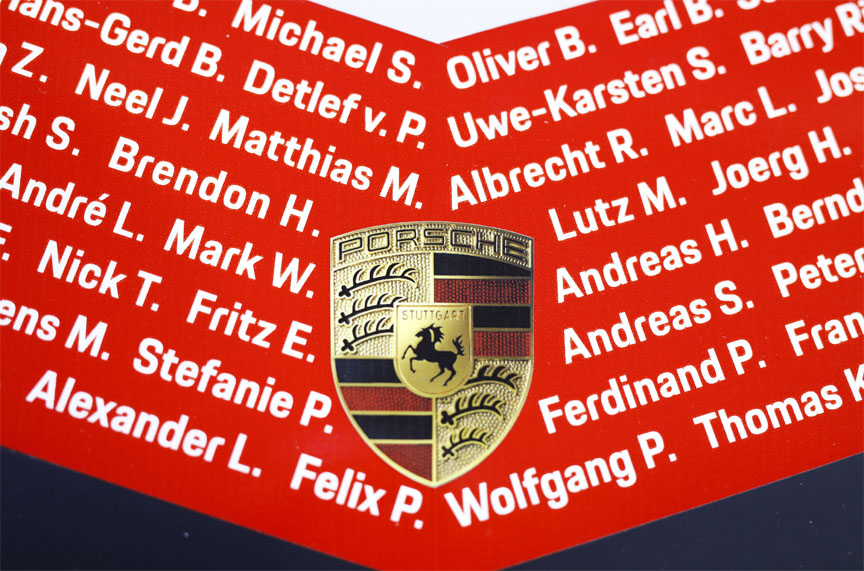
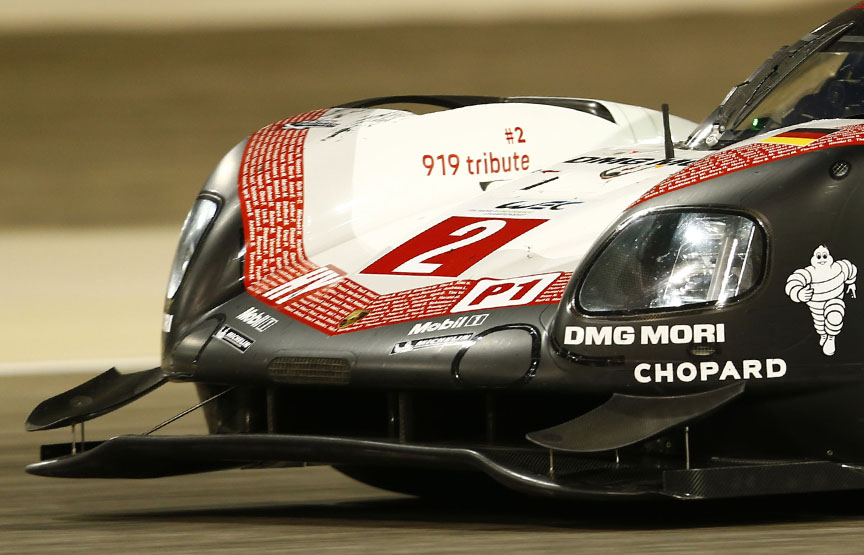
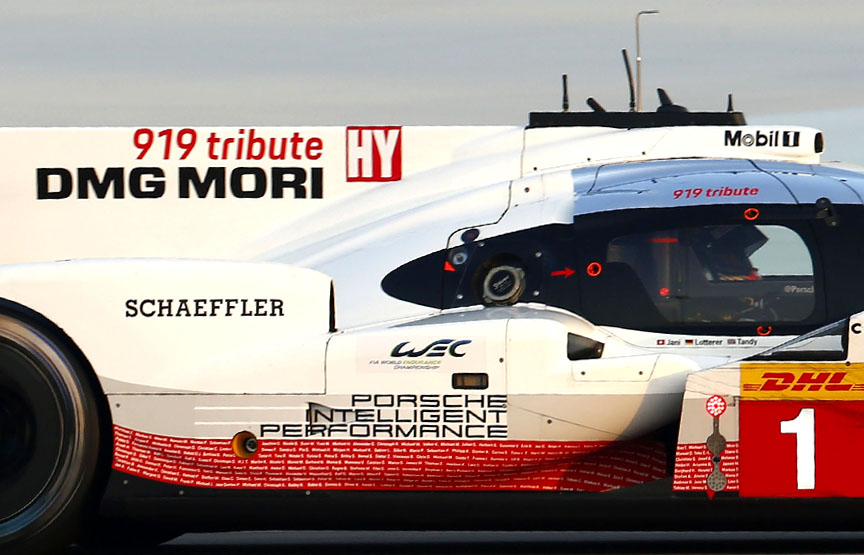
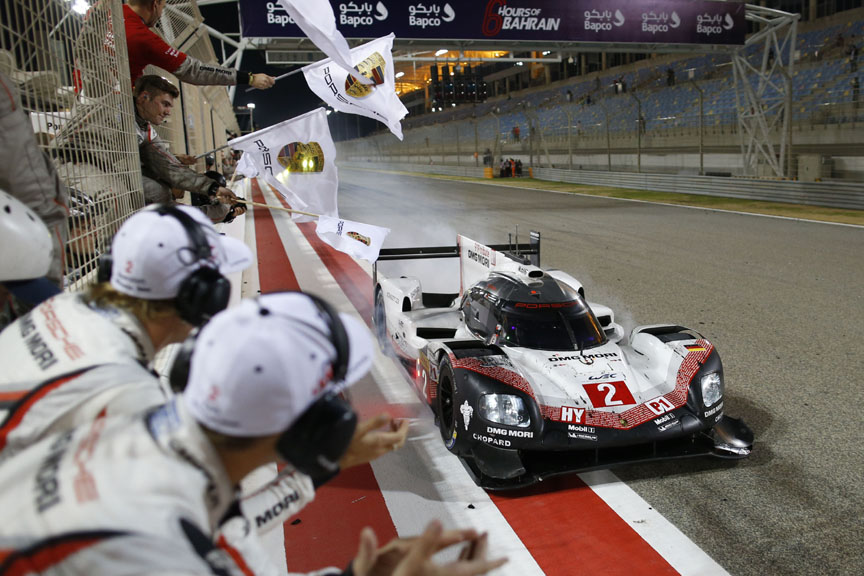
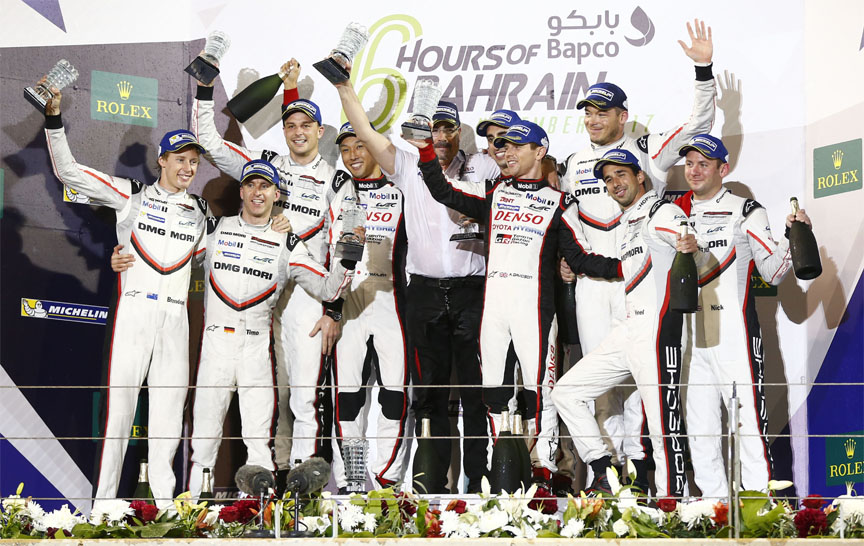
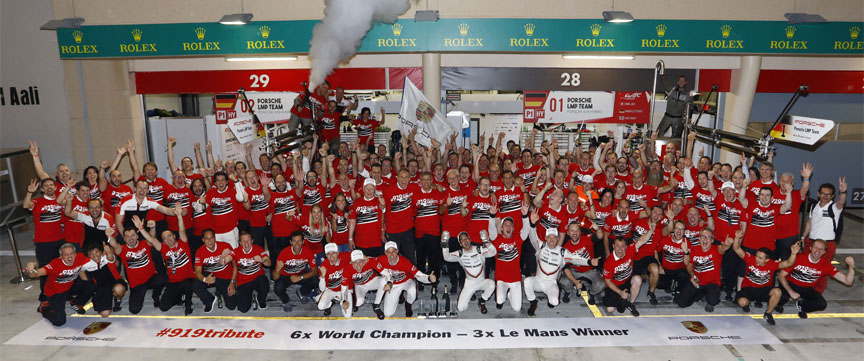
A Legacy
Since the 919’s debut in 2014, the tally from 34 races was:
- 17 wins
- 7 one-two victories
- 20 pole positions
- 13 fastest race laps
Although initially Porsche planned to race in LMP1 until the end of the 2018 season, the 2017 season showed that all manufacturers are leaving the series. With only one rival – Toyota – left in 2017, this was the final season for Porsche in LMP1 and Porsche Motorsport started to focus on Formula E series.
Porsche press release November 19, 2017
Three Le Mans wins, six World Championship titles and the smell of packet soup
For half a decade, almost everything in the lives of the Porsche LMP Team members revolved around the Porsche 919 Hybrid and the company’s successful return to the top category at the 24 Hours of Le Mans. On November 18, the most advanced hybrid racing car of its time took to the track for the last time in the FIA World Endurance Championship (WEC). Representing the team, behind closed garage doors, Fritz Enzinger, Vice President LMP1 and Team Principal Andreas Seidl are looking back over an era.
How did you feel when the two Porsche 919 Hybrids crossed the finish line for the final time?
Fritz Enzinger: “It was a feeling of sadness on the one hand. On the other hand, I felt a great sense of relief that the project was so successful.”
Andreas Seidl: “As a team, we have stuck together through thick and thin over the years. This last run-out in competitive conditions was indeed depressing; yet at the same time, I felt a deep gratitude. Gratitude for the fact that I have been able to be part of this chapter of Porsche motorsport history, for the successes and, above all, for the fact that we got through four years without any accidents that resulted in injuries.”
Do you still remember your expectations when you first started in this role?
FE: “Above all, I remember the expectations that were placed on the project. Everybody assumed that the 17th overall victory in Le Mans was a certainty. This sense of conviction was astounding because Porsche had not been in the top class in Le Mans since 1998. There was neither infrastructure nor experience at the level of the new LMP1 hybrid class. After all, we had to build a Formula 1 racing car with a roof.”
AS: “When I started, I was not fully aware of quite how significant this project was for Porsche, in terms of the identity of the workforce and the expectations inside and outside of Porsche. For me, before starting in this role, the Porsche LMP was another very interesting motorsport project that I wanted to make successful. I had not really an idea what it meant to represent Porsche at Le Mans and compete for the overall victory. I was a sprint racing junkie. This changed quickly. I saw the unique opportunity to be able to build up a racing team from scratch and had the goal of winning races. First and foremost, at Le Mans.”
How did you deal with the pressure?
FE: “The first few months were difficult. I joined the company, coming from extern, in 2011 during a miserable November when the rain was constant. I worked 14-hour days and fought on all fronts. In this project, there was never a single first step. Everything had to happen in parallel. Construction discussions, meetings on regulations, staff meetings, finance and technology – the schedule was extremely tight, and the time passed incredibly quickly. Of course, there were also days when self-doubt crept in. I did not just walk casually into this role, thinking, ‘right, I’ll just manage that’. Building something so great from scratch was not just a first for Porsche. From the rest of the automotive industry, I know only of examples where existing structures have been expanded. But I never allowed myself any thoughts of failure.”
AS: “For me, optimum preparation takes away a certain degree of pressure, and helps me to manage the rest. As a team, we did everything possible to ensure that we were prepared as well as we could be for our races. We went through all of the scenarios that can occur on a race weekend again and again. We marked out our Road to Le Mans, and planned precisely what we wanted to test, when and where we wanted to test it, and how we would make use of our personnel. But even the best possible preparation does not remove that pressure that builds up before Le Mans, and reaches its peak on the Saturday afternoon before the start. In my position, it was important to give off a sense of calm, despite the internal pressure. I had to show the team that we had done everything we could, we were well prepared, and now we were going to do what we came here to do.”
What were the three most important decisions at the start of the programme?
FE: “There is only one decision that stands out for me. That was the creation of a separate main department for the LMP programme, which reported directly to the Executive Board. This set-up gave us the level of flexibility that we needed.”
AS: “Yes, the streamlined and independent structure was very important. Secondly, it was crucial to have our own factory team in Weissach and not just to position development there. The third decision that I believe was vital was the philosophy that was also held by the Executive Board of adopting a very aggressive and uncompromising approach in terms of the vehicle concept, in order to exploit the maximum potential allowed by the rules.”
What was your personal highlight in the years gone by?
FE: “That was when Dr Wolfgang Porsche put his hands on my shoulders after the first overall victory in 2015 and said: ‘Now things are back to how they used to be at Porsche.’ Being involved in one of the most successful times at Porsche has meant a lot to me. That first Le Mans victory was definitely the best, because of how convincingly we won. We were only in our second season and were performing with such superiority. The second and third victories involved special circumstances. On those occasions, I had already somewhat resigned myself to the fact that it might not be our time.”
AS: “It was definitely the 24 hours in 2015 for me as well. In terms of the preparation and the two weeks at Le Mans, this was the biggest operation that I had ever been involved in, and this time I was leading it. The deployment of these three cars and the co-ordination of the entire team in the race was beyond anything I had done before. To have three cars complete the race without technical problems, achieve a one-two victory and become the benchmark in terms of pit stops by one’s own efforts – it was close to perfection and just how I pictured a race should be. It was also the unique moment when we as a team achieved this long-desired overall victory for Porsche. We had fought hard for that and managed to meet the expectations.”
In your opinion, what was the most critical phase of the programme?
FE: “It was never really critical in my eyes, but I still remember our fourth race very well. It didn’t go well in Austin in 2014. We were not fast enough, there was a downpour and, most importantly, a loss of power in one car, so we did not get a place on the podium. At that point, I understood that Porsche did not have much practice in lagging behind expectations. But in the end, we were all able to carry forward our development philosophy together: In cases of doubt, we always opted for the more aggressive approach with the goal of making the 919 quick first of all and stable in the end. If the car finishes a race the first time, then it is also capable of winning – this was our credo.”
AS: “For me, the most critical time was definitely the test phase before our first race. We had lots of technical problems and the pressure was really on. We were a team that had recently been thrown together, and had to start by getting our personal relationships on the same page. The team structure had to evolve alongside the development of a highly complex vehicle. We had zero reference material about how and what we were doing would position us in relation to the competition. There was a certain amount of unrest within Porsche because we had no results to report. Some information was leaked and there were stories about how bad the outlook was for us. Overcoming this ‘they’ll never do it’ attitude as a team was difficult. We also lost people along the way, who no longer believed in our mission. But getting through it all together made us even closer later on. This was where the foundations were laid, and thankfully those in key roles stayed with us.”
At which points your nerves were on the edge?
FE: “I don’t get really nervous. I suppose it’s just not in my nature. The more difficult a situation gets, the calmer I become. This has always been the case, and that is good for the mood of the team. If things get hairy or something goes wrong, there will of course be a lot of people focusing on my reaction. If I remain calm, this helps everyone to concentrate. I think a hectic pit with frantic people is horrendous. In our team, we never yelled and we did away with pointless allocation of blame back in the first development phase. During the early tests, there were strong vibrations coming from the combustion engine. Because of this, the handling was of course terrible, but it wasn’t the fault of the lads from the chassis development team. They had to switch from aluminium to steel so that we could drive at all. During this time, we all learned a lot about personal relationships and understood that we needed to be able to solve problems together if we were to move forward.”
AS: “I try to tackle each subject analytically and in co-operation with the team in order to find solutions. However, the fact that my nerves were never on edge during this project was also due to the fact that luckily our programme was a continuous success story.”
How many times did you cry tears of joy?
FE: “At least three times. Winning at Le Mans is such a special thing. And to achieve it with Porsche adds an extra dimension because it impacts the entire company. When we returned home, Porsche colleagues that I didn’t even know were congratulating me and hugging me.”
AS: “I tend to save my emotions until I get home. But I just couldn’t hold it in those times that we crossed the finish line to win in Le Mans. There is this two-week event, with all the pressure that builds up beforehand and finally the race itself, which is so exhausting both physically and mentally – and then when you see the chequered flag and win for the factory with a Porsche, it is an unparalleled feeling. In that moment, it feels as though a great weight has suddenly been lifted. To see the joy and relief on the faces of the team is indescribable. I know that I will never be able to top this experience, no matter what. I am grateful every day for the experience.”
Which driver performance has impressed you the most?
FE: “I couldn’t reduce it to a single situation. All ten LMP drivers have greatly impressed me many times over, regardless of the result. For example, in Fuji in 2017, we didn’t win. But it was terrific – the way Earl Bamber drove during his first WEC start stint, with a car that led the World Championship. Under this pressure, and in the most adverse conditions on a wet track, he was able to navigate the track in the 919 with such speed and control that he built up a twelve-second lead. We really had a knack for selecting good drivers.”
AS: “Instinctively the performance from the boys in the third car in Le Mans in 2015 impressed me a lot as they were pretty new to the task and yet they won. But on the other hand, it wasn’t surprising, because we chose three professionals after a tough selection process and gave them the same levels of preparation as the regular drivers right from the outset. So why would they be slower? Throughout the years, we always had the luxury of having the best and most balanced driver line-up. The error rate from the drivers was extremely low.”
What was your first thought when Mark Webber crashed in the 2014 final race?
FE: “That was bad. It was the first time in this project when I really became aware of how dangerous these races can be. When Mark approached us during his time in Formula 1 and said he wanted to be part of our LMP programme, I could hardly believe it. But he was determined to help build the team, and to immerse himself in this new field. We were so happy when he gave us a sign after the impact to let us know that he was reasonably okay! That race in São Paulo was the one that moved me the most: The accident, the agonising uncertainty, the relief and then minutes later the first victory by the other car. At that point, an enormous pressure was lifted off me and certainly everyone else in the team. It confirmed that if the car makes it round the track, it is fast enough. Everything came together on the day. But it took Mark a while to recover afterwards.”
AS: “My first thought was: Come on mate, get on the radio and let us know you’re there! Fortunately, Mark did this in a very quiet voice. In such a situation we too have only what is shown on TV. Seconds feel like minutes. At the same time we are responsible for the second car and ask ourselves if a technical failure might have been the reason and perhaps could put the other driver in danger. Driver safety always is the highest priority, but you also cannot unnecessarily retire a car. To make such safety critical decision instantly with limited information is the most difficult to do in the racing business.”
Is there a driver who you would have liked to put in a Porsche 919 Hybrid?
FE: “Yes, Patrick Dempsey during a test. But it turned out that we couldn’t give him enough time to properly get used to the car.”
AS: “Basically, all of the best drivers from other top classes. Because I would like them to get into our 919 Hybrid and come back from their first lap with a grin on their face. This car is the ultimate driving machine – one that every racing driver enjoys from the moment they first feel the maximum acceleration of the hybrid system together with the combustion engine. And, of course, it was interesting for me to see the best drivers from other top classes compete against our drivers. That showed the high quality of our drivers.”
What was the most difficult decision you had to make?
FE: “I can’t pick out a single decision, but rather a period: In the initial phase in 2012, so many different decisions had to be made in parallel, that in hindsight is quite amazing how many of them were correct.”
AS: “My bravest decision was probably signing Earl Bamber. He came from the Porsche Supercup and had no prototype experience. This involved a certain risk. But he really impressed our senior race engineer and me during his first test with how quickly he got up to speed and how consistently he was able to drive a stint. We were convinced that he could do it. It also suited our project, taking risks when they also present a great chance of success. The most difficult decisions are always related to personnel. In a racing team, you experience many ups and downs that bring you closer together – you build strong relationships with your team members. Nevertheless, in the course of the project I had to make several decisions relating to personnel that were hard for individuals, but right for team performance. Those decisions were the hardest for me. But the job of the team principal is not just collecting trophies and being popular.”
How do you recall the first Le Mans race of 2014?
FE: “This race came far too early for us. We had had only a single simulation test, and with that we never managed more than six or seven hours. The whole test operation only really worked correctly from December, after we had suppressed the vibrations. We had just two six-hour races behind us, and even those had not gone smoothly. The fact that we were in the lead at Le Mans after 20 hours raised hopes in the short term that were not reasonable. The power train and the transmission defects did not come as a surprise.”
AS: “Yes, that race was definitely too early for us. We were unprepared in terms of durability for the 24 hours, nor were we operationally ready as a team to compete with the big players. We had stability problems, our pit stops were bad compared to the benchmark and we also didn’t have the speed. We were really lucky in the race, so it was deemed to be a partial success. Even though you couldn’t and shouldn’t realistically expect more in the first year of such a complex project, this race was of course below my standards.”
How and when did you actually come to terms with the first Le Mans victory in 2015?
FE: “I remember getting back to the hotel room at about midnight, but I couldn’t fall asleep right away. I was filled with relief at the achievement. I was lying in bed going over the sluggish early stages. I was away from Munich and without my family, living in a dull apartment building where only commuters lived. I always got back there after dark, and the stairwell smelled like packet soup. It was somewhere to sleep, nothing more. I remembered the deprivation. But now the race was won and that was incredibly important for Porsche. I was so wonderfully relaxed and happy that I didn’t want to fall asleep. I wanted to hold on to that feeling. The next morning, I was picked up at six am. It was on the way to Paris that I then saw all the congratulatory SMS messages. That was very real, and there were far too many to answer them all individually. So I sent the same message to all of them: Good morning! Woke up. It wasn’t a dream.”
AS: “It was only after my return home to my family in Munich that I properly felt it. Since that was when the confirmation came from Le Mans by SMS that all the technical follow-up examinations had been passed. I can never celebrate a racing victory immediately because I always have in the back of my mind what can go wrong later during the scrutineering. At Le Mans, the checks are particularly intensive, and last until late Monday afternoon. As a result, I couldn’t really celebrate properly on the Sunday evening. But once I was home, I was very happy that we had achieved success as a team for Porsche.”
How different is the Le Mans mode from normal operation?
FE: “The focus was always clear at Le Mans. Without victory at the 24 Hours, a world championship is only worth half as much. As early as the roll-out in December, we were always asking the decisive question: Is our package good enough for Le Mans? It was clear: If the car can win there, it can also win a six-hour race.”
AS: “There was also a big difference on an operational level. In the two weeks at Le Mans, you go through a lot of extreme situations with your team, both technical and personal. No other race compares. It’s a special event format, and the pressure is huge. Everyone knows that they have this opportunity only once a year; there are no second chances. The pressure of being there with Porsche, both internally and externally, is immense. It builds up a little more every day until the cars head for the starting grid. I was always aware that, despite the best preparation, a lot of luck is required even to finish this race, and even more to win it. But that was our mission. The challenge of coping as a team in this cage down in the pit is special. And I will miss it. It only happens there.”
How much does success have to do with luck?
FE: “You cannot win Le Mans without racing luck. With almost 60 cars on the track and constantly passing others, it doesn’t happen without luck. The best team and the best car are not enough if you don’t have luck on your side. I am grateful that we had quite a lot of it.”
AS: “Winning Le Mans actually needs damn good luck. Not only on the track, but also in the pit, at the pit stops and during preparation. All suppliers must deliver parts with perfect quality, nothing must go wrong when assembling components in Weissach, the operations team has to function perfectly for the two Le Mans weeks… When I think about how many people were involved in the Le Mans operation and everything that could have gone wrong, I am very aware that a huge amount of luck is involved. And then, like Fritz says, you need luck on every corner of the race. Luck that no one hits your cars, that the drivers or the crew don’t mess up. But to be in a position to be able to benefit from this luck takes hard work and perfect preparation.”
What annoyed you the most?
FE: “It’s not in my nature to be annoyed and upset. But I don’t like know-it-alls and have made provisions in this regard. We were able to work independently in many respects. This was very important in my eyes. A project doesn’t work if there is someone around every corner who wants to get involved.”
AS: “I was annoyed by technical defects at Le Mans that occurred there in the race for the first time despite good preparation. Things that had never been previously identifiable. But you have to accept that this is part of the challenge at Le Mans. Statistical reliability is always low due to the large number of factors. Despite the best preparation, it is impossible to completely control all potential technical and human error. In 2017, we were better prepared than ever before. The endurance tests went perfectly, but then we had defects in both cars. I was extremely annoyed. Even if one car wins after all, it greatly annoys me personally not to be able to give both car crews and drivers the same opportunity to fight for the victory. Drivers don’t often get the opportunity in their life to sit in a Le Mans car that has the potential to win. And if we mess up that opportunity, then that hurts. A completely unexpected water pump failure robbed Mark Webber of his last chance at a Le Mans victory in 2016, and this year I felt terribly sorry for André Lotterer, who came to us to win Le Mans with Porsche. In this project, this was unfortunately his one and only chance. I don’t care which of our drivers win. But if we do not give them the opportunity to succeed, then I offer them my sincere apologies.”
If you had to carry out the whole programme again from scratch, how much or what would you do differently?
FE: “When I look at what we have achieved, it would better if I didn’t change too much. With three Le Mans victories and six world championship titles in the last three years, we got as much out of it as we could.”
AS: “Fritz passed on to me a lot of the freedom that he was given by his superiors. With this freedom, I was able to set up all of the structures in a way that felt right to me. Success in such a highly complex programme is the result of daily hard work and can only be achieved by a team. The team was a good mix of Porsche employees with years of experience in the company and specialists coming from outside Porsche who brought with them very different experiences from a variety of racing series. The strong composition of the team of key figures directly under me, on whom I could absolutely rely even in the most critical of situations, was extremely important. Looking back, we didn’t make many mistakes from the beginning. But this kind of project is never perfect, and I would continue working on a lot of the details.”
What is the most important lesson for future Porsche programmes?
FE: “The fact that the success of such a project depends entirely on the people. Creating the prerequisites such as infrastructure and budget was my job. But the implementation, the creation of a team spirit and the passion that requires everyone always wanting to be even better in their area – that lies with each individual team member from various departments. Be it purchasing, human resources, marketing, press, physiotherapy or catering. We have built a great team and given everyone the freedom and confidence they needed.”
AS: “With long-term motorsports projects, it is important that you agree with top management from the start that you need the appropriate conditions if you want to win. We had that. Budget, structure, courage, backing. The target must be common sense and you have to get up again if you’re down. You cannot make many compromises; the competition is tough.”


